India, with its vast landscapes and diverse ecosystems, presents a haven for bird enthusiasts. Hosting an impressive 1,377 bird species, India showcases a rich array of avian life, from the majestic Indian peafowl, its national bird, to the rare endemic species that highlight its unique biodiversity.
This diversity not only underscores India’s ecological richness but also emphasizes the urgent need for conservation efforts, as 212 species face global threats.
The appeal of birdwatching in India surpasses numerical richness. South India alone is home to over 500 species, attracting birders and nature lovers to its lush habitats.
This region’s birdlife, alongside opportunities for stunning photography, establishes it as a premier destination for those dedicated to ornithology.
As the interest in birdwatching rises, so does the responsibility to conserve these avian treasures for future generations.
1. Grey Junglefowl
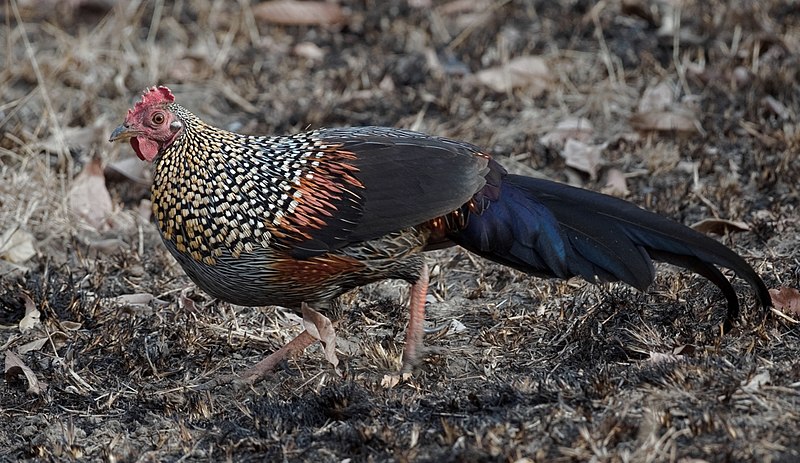
The Grey Junglefowl, Gallus sonneratii, is an important bird species native to India. It’s known as one of the wild ancestors of the domestic chicken, alongside the Red Junglefowl.
This species is endemic to India and is primarily found in the forests of the southern and western parts of the country. Locally, it’s called Komri in Rajasthan and Jangli Murghi in Hindi.
It’s renowned for its plumage, blending grays with striking streaks of red and yellow. The Grey Junglefowl contributes significantly to the biodiversity of India’s avian landscape.
Scientific classification:
| Kingdom | Animalia |
| Phylum | Chordata |
| Class | Aves |
| Order | Galliformes |
| Family | Phasianidae |
| Genus | Gallus |
| Species | G. sonneratii |
Also Featured In: Common Birds in Kerala, Birds that Live in Rajasthan
2. Indian Peafowl
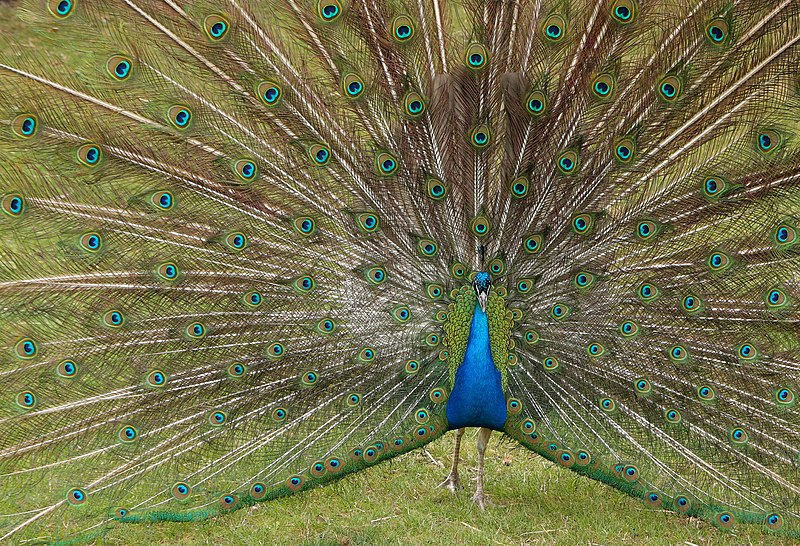
The Indian peafowl, scientific name Pavo cristatus, is also known as the blue peafowl. It’s native to the Indian subcontinent and designated as the national bird of India.
Males showcase plumage, often called peacocks, while females are termed peahens. Populations are stable, categorized under the “Least Concern” status by IUCN due to their prevalent range and adaptability in different habitats.
Scientific classification:
| Kingdom | Animalia |
| Phylum | Chordata |
| Class | Aves |
| Order | Galliformes |
| Family | Phasianidae |
| Genus | Pavo |
| Species | P. cristatus |
Also Featured In: Blue Birds You’ll Found around Us, Birds You’ll Find in Zoo
3. Bustard
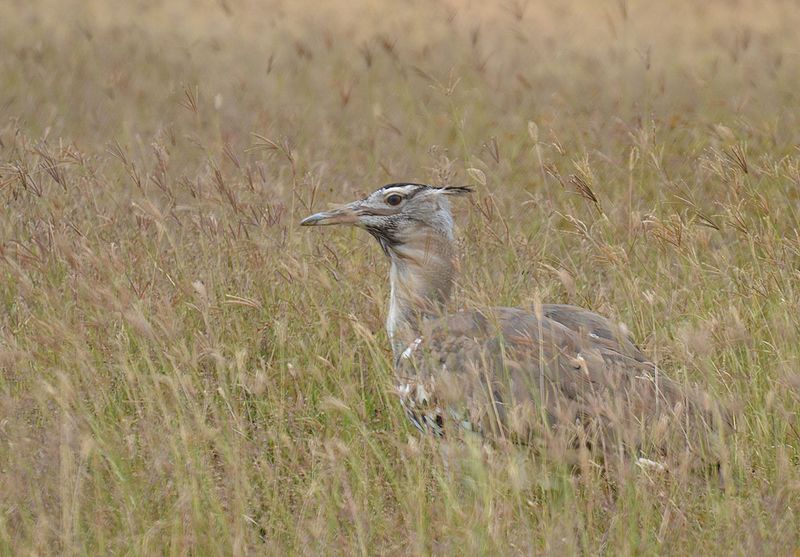
Bustards inhabit India’s dry grasslands, contributing to its avian diversity. These large terrestrial birds range from 40 to 150 cm in length. As omnivores, they consume leaves, buds, seeds, small vertebrates, and invertebrates.
There are 26 recognized bustard species worldwide, with the Great Indian Bustard being one of the most notable in India.
This species, although majestic, faces critical endangerment due to habitat loss. Their presence in India underscores the need for conservation efforts.
Scientific classification:
| Kingdom | Animalia |
| Phylum | Chordata |
| Class | Aves |
| Clade | Otidimorphae |
| Order | Otidiformes Wagler, 1830 |
| Family | Otididae Rafinesque, 1815 |
Also Featured In: Turkey Birds You Should Know, Ukrainian Birds You Should Know
4. Indian Roller
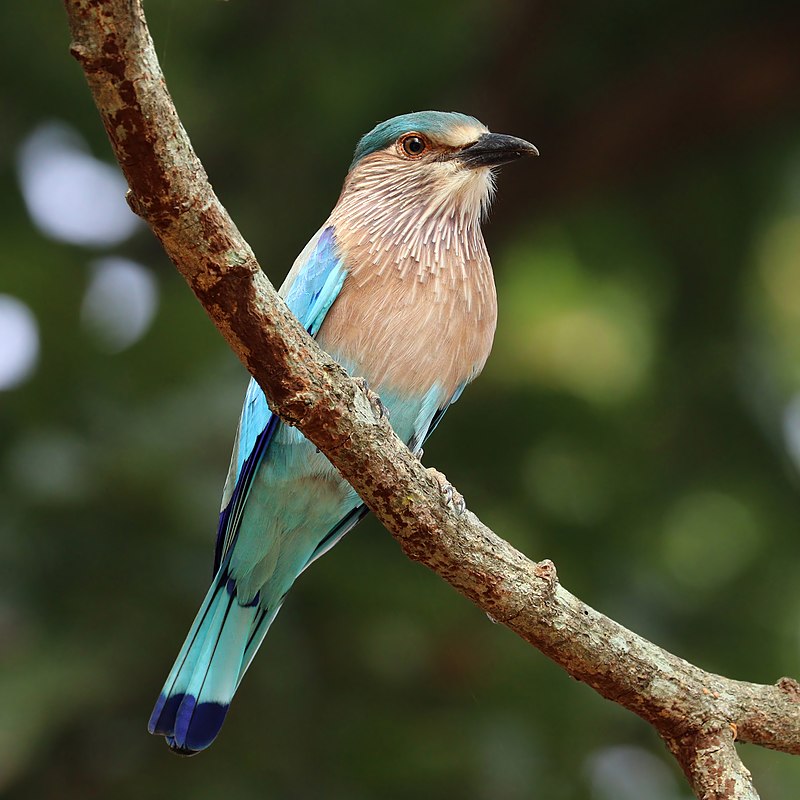
The Indian roller (Coracias benghalensis) enchants with its blues and striking aerobatic displays.
Measuring 30–34 cm and weighing 166–176 g, it thrives across the Indian subcontinent and displays shades of brown and pink.
This bird often perches along roadways in open landscapes. Insects, particularly beetles, make up its primary diet.
During breeding, pair bonds are formed, and 3–5 eggs are laid, showcasing familial teamwork in nurturing the young.
Scientific classification:
| Kingdom | Animalia |
| Phylum | Chordata |
| Class | Aves |
| Order | Coraciiformes |
| Family | Coraciidae |
| Genus | Coracias |
| Species | C. benghalensis |
Also Featured In: Birds That Live in the Jungle, Common Birds that Live in Odisha
5. Rock Dove
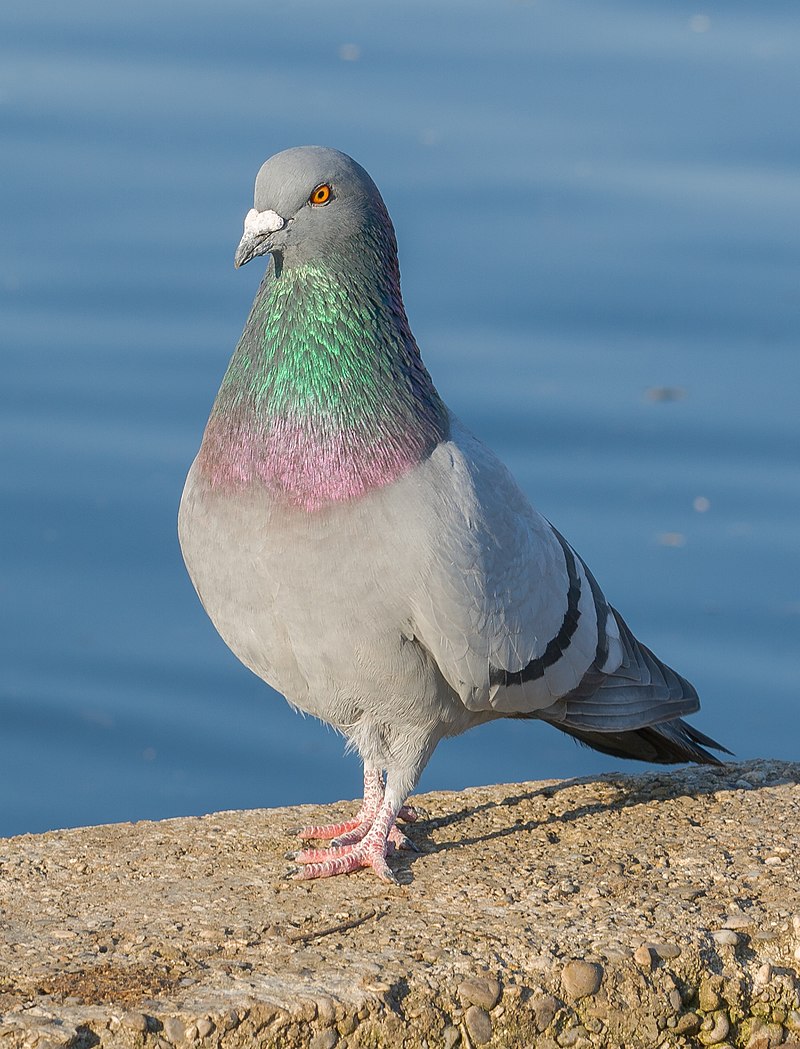
The Rock Dove, also known as the rock pigeon, is a notable member of the Columbidae family. Recognized widely, its familiar presence is often felt in urban areas.
This species includes the domestic pigeons commonly observed worldwide. Known scientifically as Columba livia, the Rock Dove provides a foundational study for understanding avian behavior in city environments.
They add to India’s complex avian ecosystem, offering ecological contributions and posing unique conservation challenges.
Scientific classification:
| Kingdom | Animalia |
| Phylum | Chordata |
| Class | Aves |
| Order | Columbiformes |
| Family | Columbidae |
| Genus | Columba |
| Species | C. livia |
Also Featured In: Italian Birds You Should Know, Common Birds in the Cities
6. Greater Coucal
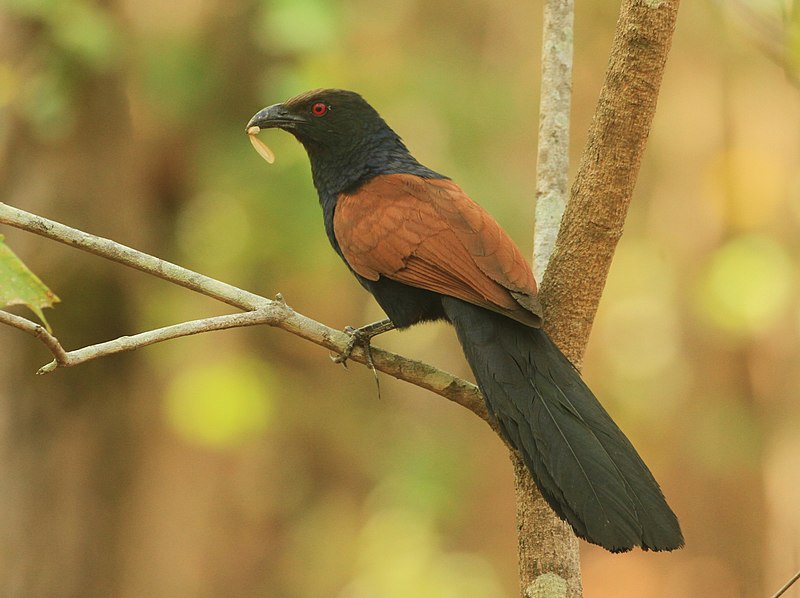
The Greater Coucal, known as Centropus sinensis, is a large bird resembling a crow with coppery brown wings.
Prominently residing in the Indian Subcontinent, it’s a non-parasitic member of the cuckoo order. It inhabits diverse areas from jungles to urban gardens.
Due to weak flying abilities, it often forages on the ground, seeking insects and bird nestlings. Its deep resonant call is notably linked to omens across its range.
Scientific classification:
| Kingdom | Animalia |
| Phylum | Chordata |
| Class | Aves |
| Order | Cuculiformes |
| Family | Cuculidae |
| Genus | Centropus |
| Species | C. sinensis |
Also Featured In: Hong Kong Birds You Need to See, Birds of Goa
7. Painted Stork
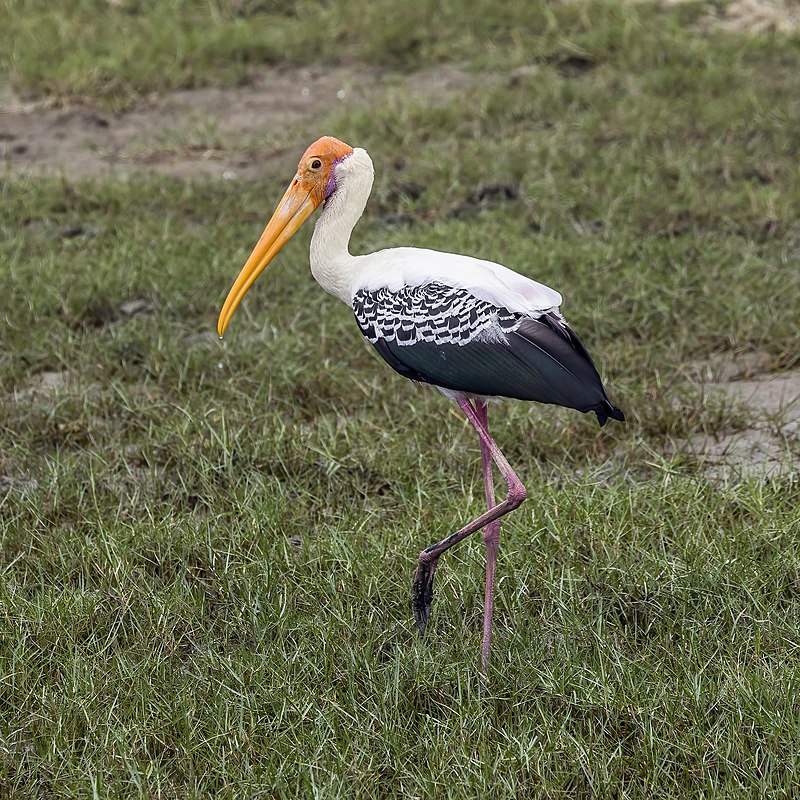
The Painted Stork, Mycteria leucocephala, thrives in the wetlands of tropical Asia’s plains. Vivid pink feathers on its tertials make it easily identifiable.
This wading bird inhabits regions south of the Himalayas, extending into Southeast Asia. Currently classified as near threatened, it plays a crucial role in the ecosystem.
People often spot it nesting in large structures, sometimes reused for years, further underscoring its unique behavior.
Scientific classification:
| Kingdom | Animalia |
| Phylum | Chordata |
| Class | Aves |
| Order | Ciconiiformes |
| Family | Ciconiidae |
| Genus | Mycteria |
| Species | M. leucocephala |
Also Featured In: Gujarati Birds, Birds that Live in Tamil Nadu
8. Great Indian Bustard
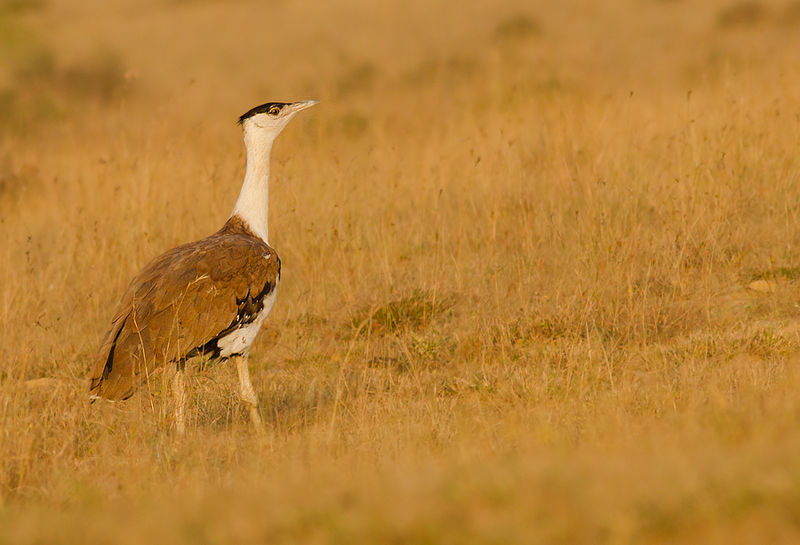
The Great Indian Bustard, scientifically named Ardeotis nigriceps, stands among the heaviest flying birds. This bird inhabits the Indian subcontinent and now sits at a critically endangered status.
Possessing long bare legs and a horizontal body, it’s distinguished by its striking patterns in flight. Conservation efforts are paramount due to its declining population, largely affected by habitat loss in dry grasslands.
Scientific classification:
| Kingdom | Animalia |
| Phylum | Chordata |
| Class | Aves |
| Order | Otidiformes |
| Family | Otididae |
| Genus | Ardeotis |
| Species | A. nigriceps |
Also Featured In: Common Birds of Maharashtra,
9. Chestnut-Winged Cuckoo
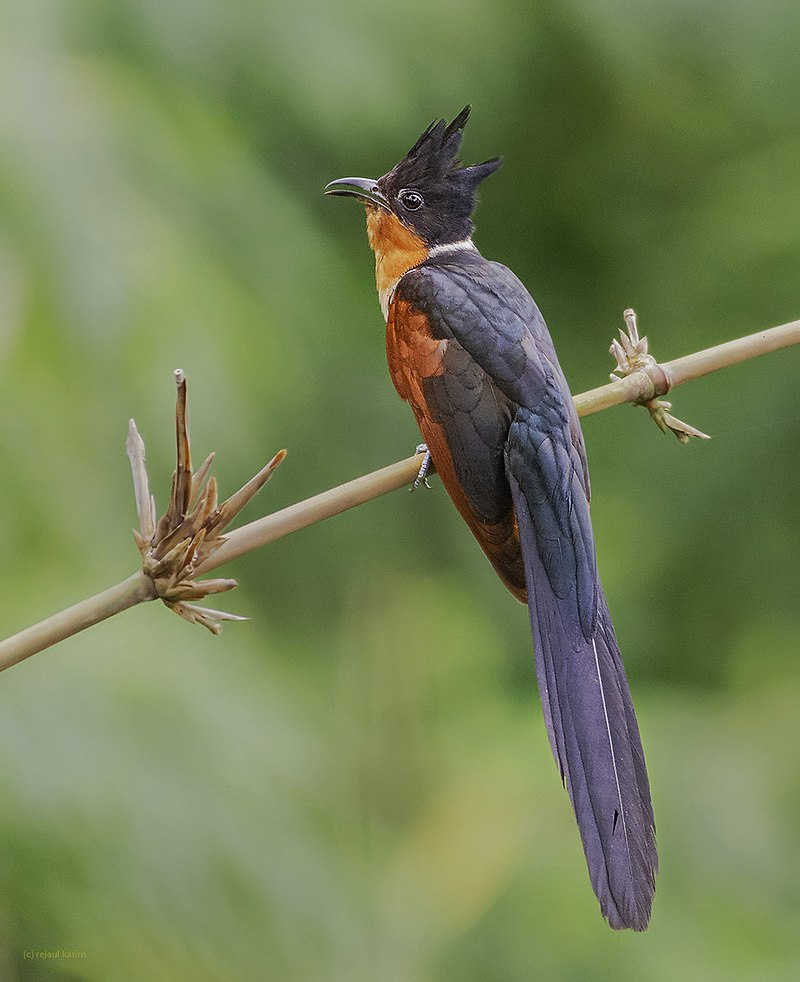
The Chestnut-Winged Cuckoo, thriving in Southeast and South Asia, captivates with striking plumage. Dark glossy upperparts contrast its chestnut wings and black head adorned by a dramatic crest.
It possesses a long glossy black tail and a rufous throat with a dusky underside. A narrow white nuchal half collar completes its distinct appearance, making it a remarkable presence in diverse habitats.
Scientific classification:
| Kingdom | Animalia |
| Phylum | Chordata |
| Class | Aves |
| Order | Cuculiformes |
| Family | Cuculidae |
| Genus | Clamator |
| Species | C. coromandus |
Also Featured In: Guam Birds You Need to See, Birds that Migrate to Sri Lankan
10. Red-Wattled Lapwing
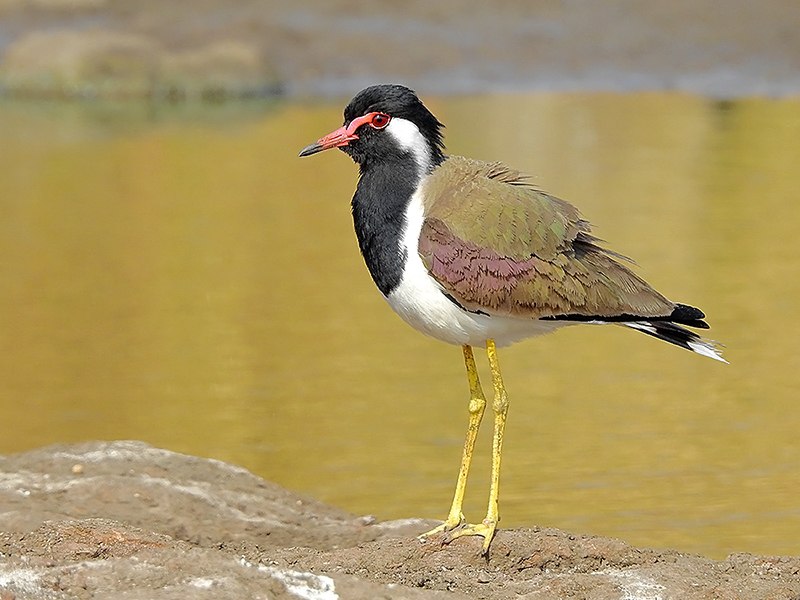
The Red-Wattled Lapwing (Vanellus indicus) is part of the Charadriidae family, which includes plovers and lapwings. These ground-dwelling birds can’t perch and often inhabit wetlands and grassy fields.
Asia is home to these lapwings, where their distinctive red facial wattles make them easily recognizable.
Red-wattled lapwings are not currently facing immediate threats, securing a place in India’s diverse avian ecosystem. They showcase how critical nature conservation is in maintaining biodiversity.
Scientific classification:
| Kingdom | Animalia |
| Phylum | Chordata |
| Class | Aves |
| Order | Charadriiformes |
| Family | Charadriidae |
| Genus | Vanellus |
| Species | V. indicus |
Also Featured In: Birds that Live in Uttar Pradesh, Birds of Konkan
11. Rose-Ringed Parakeet
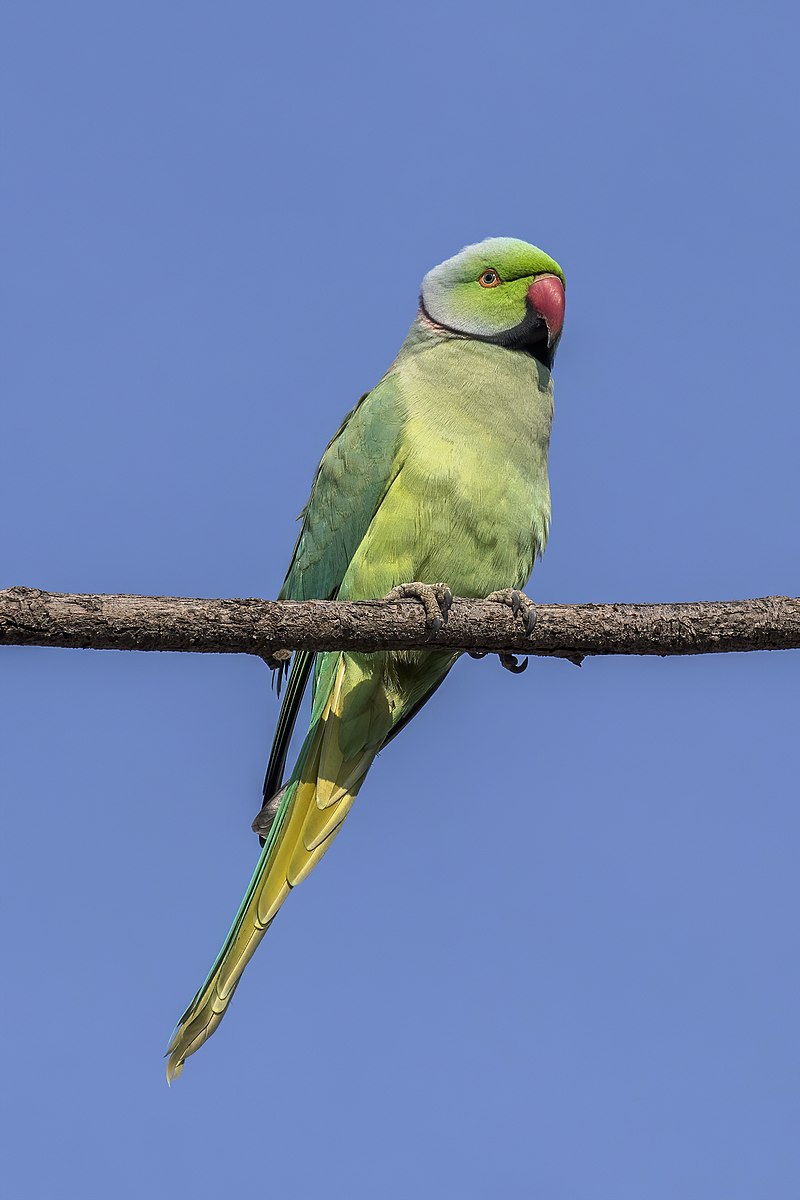
The Rose-ringed parakeet is a highly intelligent bird found across the Indian subcontinent. Part of the genus Psittacula, it captivates with its plumage.
Observers often note its remarkable adaptability to urban and rural habitats. With a strong curved bill and zygodactyl feet, the parakeet exhibits a characteristic stance.
It plays an integral role in maintaining the ecological balance while enchanting birdwatchers with its graceful flight.
Scientific classification:
| Kingdom | Animalia |
| Phylum | Chordata |
| Class | Aves |
| Order | Psittaciformes |
| Family | Psittaculidae |
| Genus | Psittacula |
| Species | P. krameri |
Also Featured In: Common Birds of Mumbai, Common Birds in London
12. Common Kingfisher
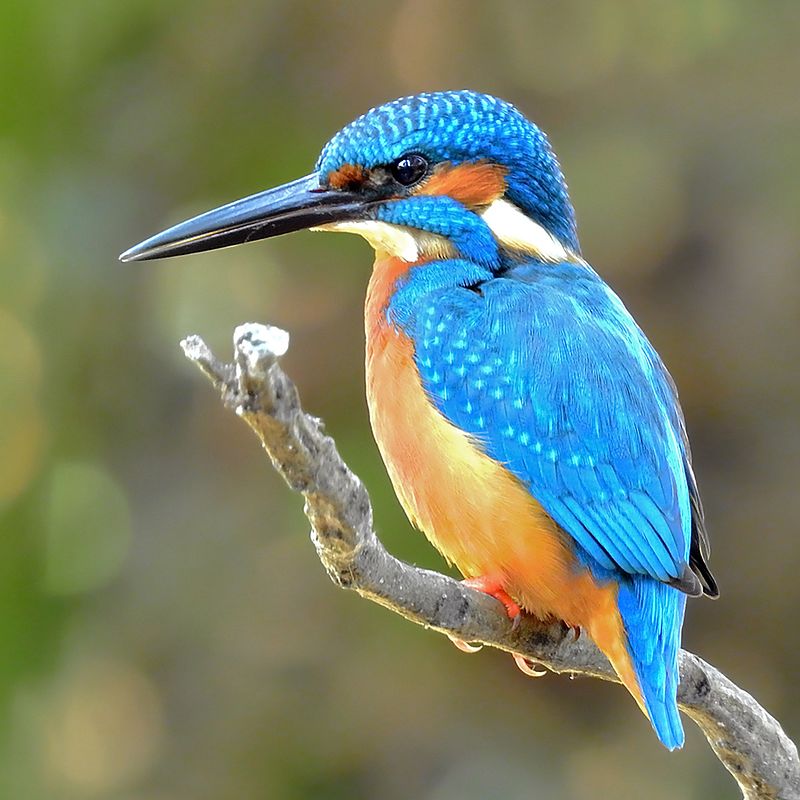
The Common Kingfisher, or the Eurasian Kingfisher, stands out with its brilliant plumage and small size. It inhabits a wide range across Eurasia and North Africa.
Seven distinct subspecies are recognized. This bird migrates seasonally from frozen river areas but remains a resident in milder climates, showcasing its adaptability and resilience in various habitats.
Scientific classification:
| Kingdom | Animalia |
| Phylum | Chordata |
| Class | Aves |
| Order | Coraciiformes |
| Family | Alcedinidae |
| Subfamily | Alcedininae |
| Genus | Alcedo |
| Species | A. atthis |
Also Featured In: Most Common Romanian Birds, Birds Found in Hungary
13. Bar-Headed Goose
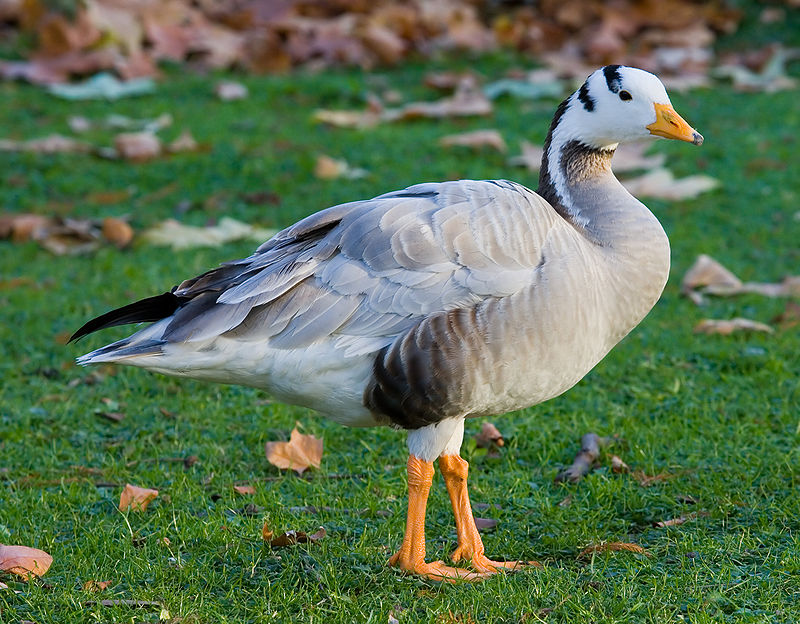
The Bar-Headed Goose, renowned for its high-altitude migrations, breeds near Central Asia’s mountain lakes.
This remarkable bird nests on the ground, laying three to eight eggs in colonies of thousands. Each year, they migrate across the Himalayas to winter in South Asia, reaching as far as peninsular India.
Scientific classification:
| Kingdom | Animalia |
| Phylum | Chordata |
| Class | Aves |
| Order | Anseriformes |
| Family | Anatidae |
| Genus | Anser |
| Species | A. indicus |
Also Featured In: Flight Birds You Should Know, Birds of Karnataka
14. Phasianidae
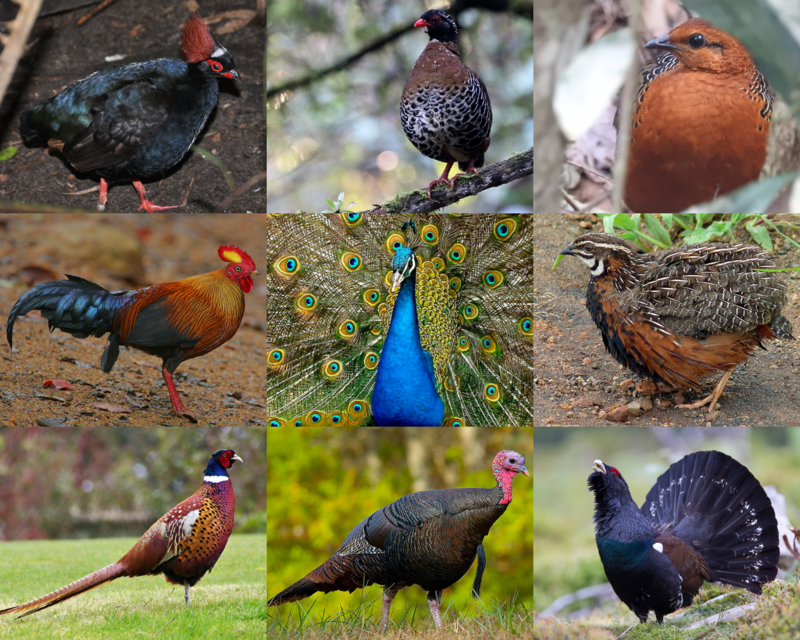
The Phasianidae family boasts 185 species and 54 genera. Pheasants, partridges, and quail showcase diversity. They are ground-dwelling birds seen across India.
Among them, the Indian Peafowl, notable for its vivid display, stands out with its role as the national bird.
Junglefowl include the Grey Junglefowl, linked to domestic chickens, enriching India’s avian diversity. Each species contributes uniquely to the ecosystem.
Scientific classification:
| Kingdom | Animalia |
| Phylum | Chordata |
| Class | Aves |
| Order | Galliformes |
| Superfamily | Phasianoidea |
| Family | Phasianidae Horsfield, 1821 |
15. Indian Cuckoo
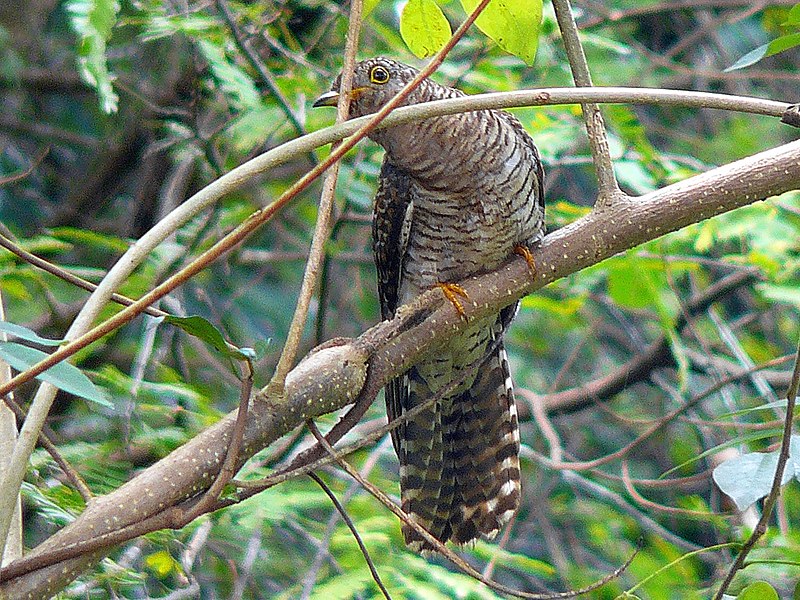
The Indian cuckoo, known for its distinct call, inhabits the Indian subcontinent and Southeast Asia. This bird, belonging to the Cuculiformes order, thrives in diverse habitats from India to China and Russia.
Often heard, its melodious calls echo through forests and wooded areas. The Indian cuckoo’s range includes countries like Bangladesh and Sri Lanka, showcasing its adaptability across regions.
Scientific classification:
| Kingdom | Animalia |
| Phylum | Chordata |
| Class | Aves |
| Order | Cuculiformes |
| Family | Cuculidae |
| Genus | Cuculus |
| Species | C. micropterus |
Also Featured In: Most Common Madhya Pradesh Birds, Common Birds of Chhattisgarh
16. Black Stork
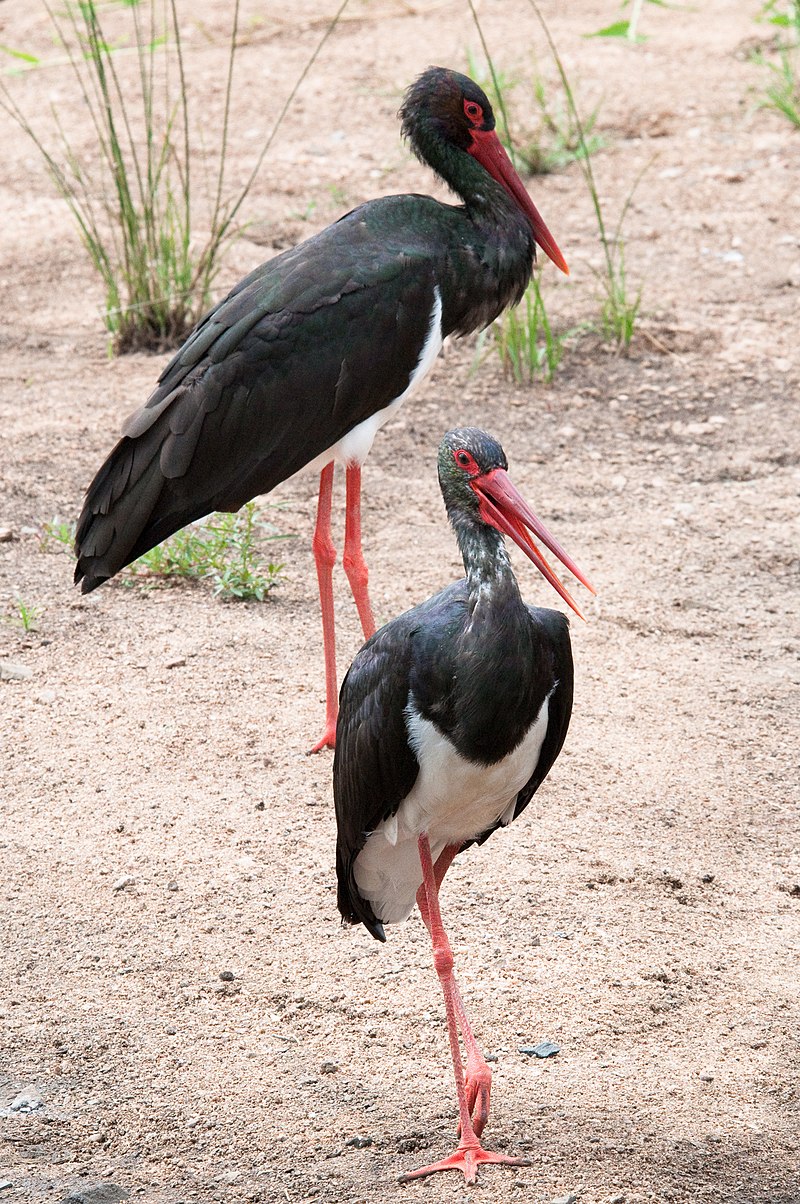
The Black Stork, or Ciconia nigra, displays striking black plumage with contrasting white underparts. Averaging 95–100 cm in length and a wingspan of 145–155 cm, it stands out with long red legs and a pointed red beak.
Although widespread, it’s considered uncommon, favoring isolated breeding spots across Europe and east to the Pacific. It migrates long distances, with European populations wintering in Sub-Saharan Africa.
Scientific classification:
| Kingdom | Animalia |
| Phylum | Chordata |
| Class | Aves |
| Order | Ciconiiformes |
| Family | Ciconiidae |
| Genus | Ciconia |
| Species | C. nigra |
Also Featured In: Common Algerian Birds , Bulgarian Birds
17. Yellow-Wattled Lapwing
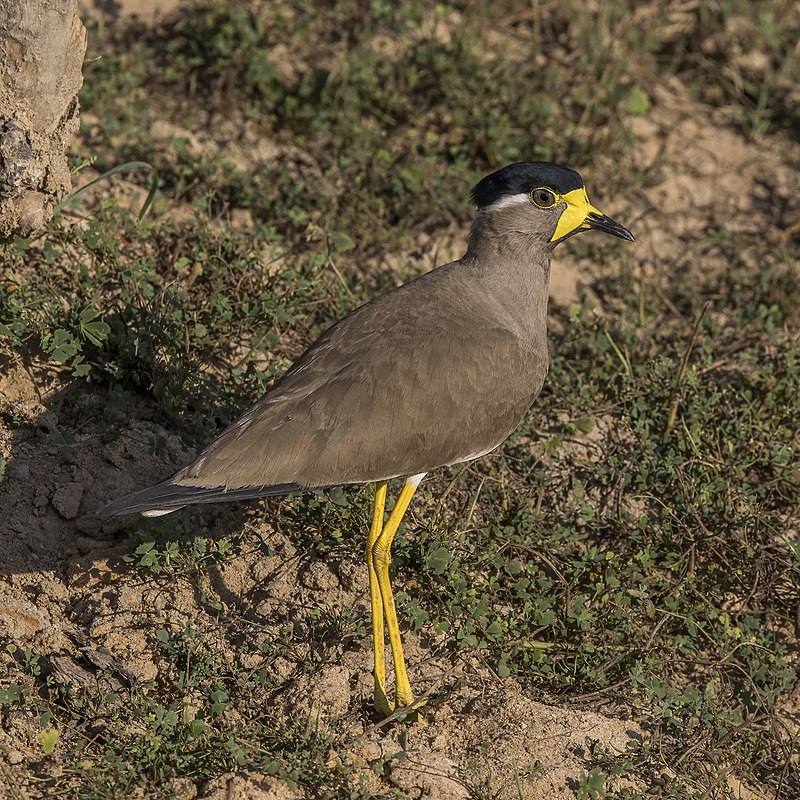
The Yellow-Wattled Lapwing is native to the Indian Subcontinent, specifically thriving on the dry plains of peninsular India.
Known for its alertness, it produces a sharp call characteristic of the species. Though not migratory, they adjust their movements in response to seasonal rains.
Fast flight defines this lapwing’s mobility, making it a distinctive part of India’s avian diversity.
Scientific classification:
| Kingdom | Animalia |
| Phylum | Chordata |
| Class | Aves |
| Order | Charadriiformes |
| Family | Charadriidae |
| Genus | Vanellus |
| Species | V. malabaricus |
Also Featured In: Common Birds in Bangalore, Birds of Andhra Pradesh
18. Asian Koel
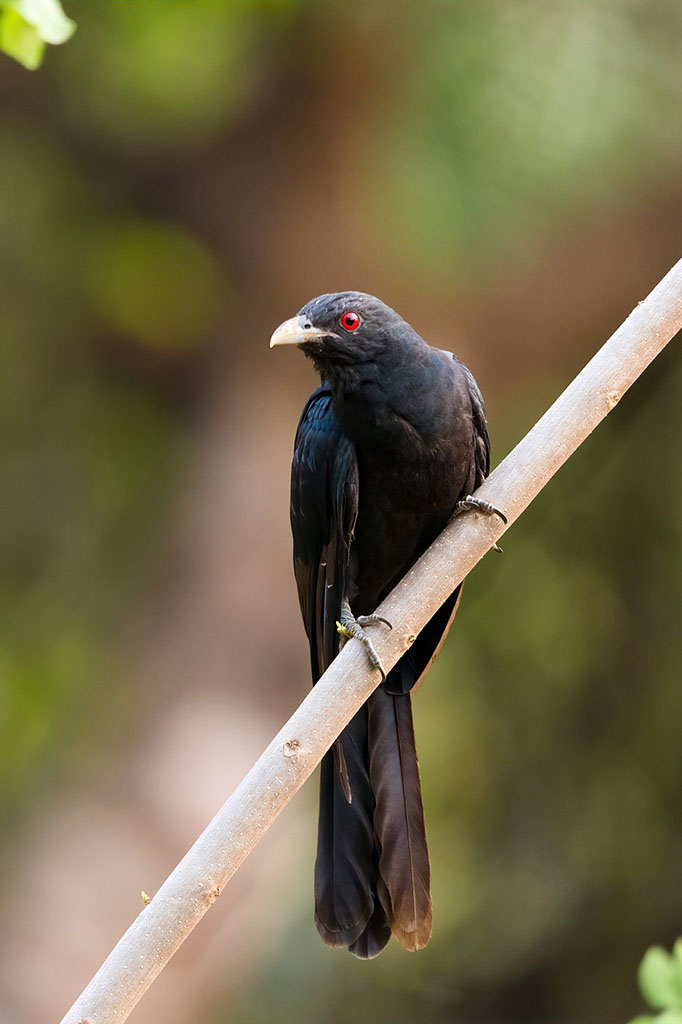
The Asian koel, part of the cuckoo family Cuculiformes, thrives in the Indian Subcontinent. It’s closely related to black-billed and Pacific koels, forming a superspecies.
Found across China and Southeast Asia, this bird is easily recognized by its distinct call. Its adaptability spans varied habitats, contributing to the region’s avian diversity.
Scientific classification:
| Kingdom | Animalia |
| Phylum | Chordata |
| Class | Aves |
| Order | Cuculiformes |
| Family | Cuculidae |
| Genus | Eudynamys |
| Species | E. scolopaceus |
Also Featured In: Delhi Birds You Need to See, Common Birds of Jharkhand
19. Asian Openbill
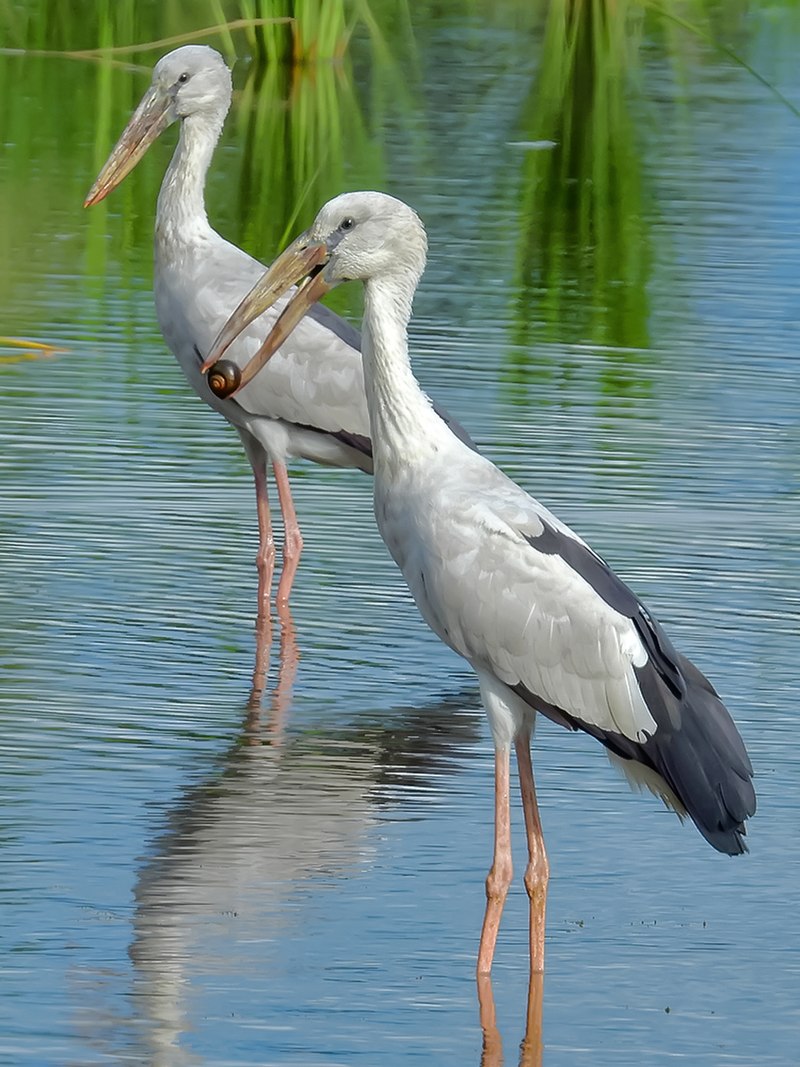
The Asian Openbill thrives in the Indian subcontinent, a large presence in the region. It’s part of the stork family, Ciconiidae, characterized by striking white and black coloring.
Mainly found in wetlands, these birds prefer habitats filled with snails, their primary diet. Known for their unique bill shape, they skillfully crack snail shells, showcasing remarkable adaptations.
Scientific classification:
| Kingdom | Animalia |
| Phylum | Chordata |
| Class | Aves |
| Order | Ciconiiformes |
| Family | Ciconiidae |
| Genus | Anastomus |
| Species | A. oscitans |
Also Featured In: Birds That You’ll See in Kaziranga National Park, Birds that You’ll Find in Kolkata
20. Lesser Coucal
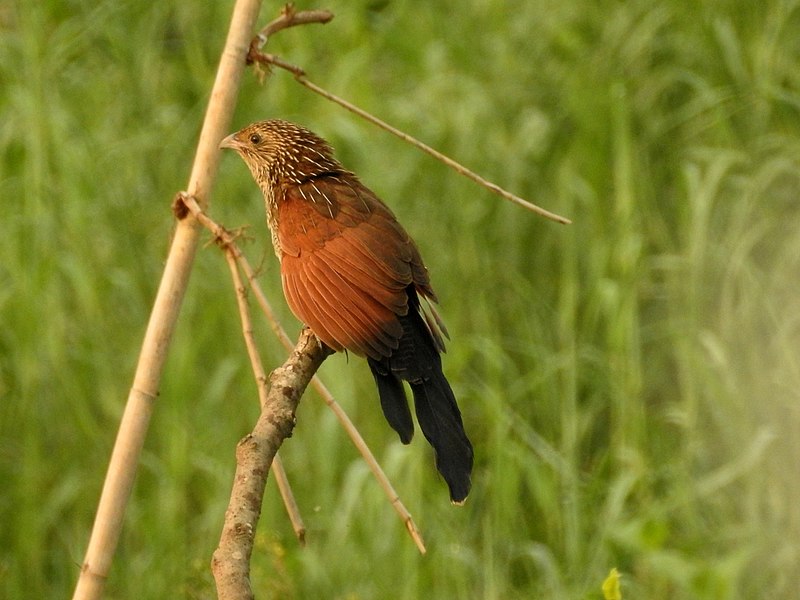
The lesser coucal, part of the cuckoo family, inhabits marshy lands in India. Its range overlaps with similar species, yet it’s easily identified by birdwatchers due to its unique habitat of grassy areas and scattered trees.
The bird’s presence in these environments adds to India’s diverse avian landscape.
Scientific classification:
| Kingdom | Animalia |
| Phylum | Chordata |
| Class | Aves |
| Order | Cuculiformes |
| Family | Cuculidae |
| Genus | Centropus |
| Species | C. bengalensis |
Also Featured In: Birds that Live Near Halmahera, Common Birds of Lombok
21. Green-Billed Malkoha
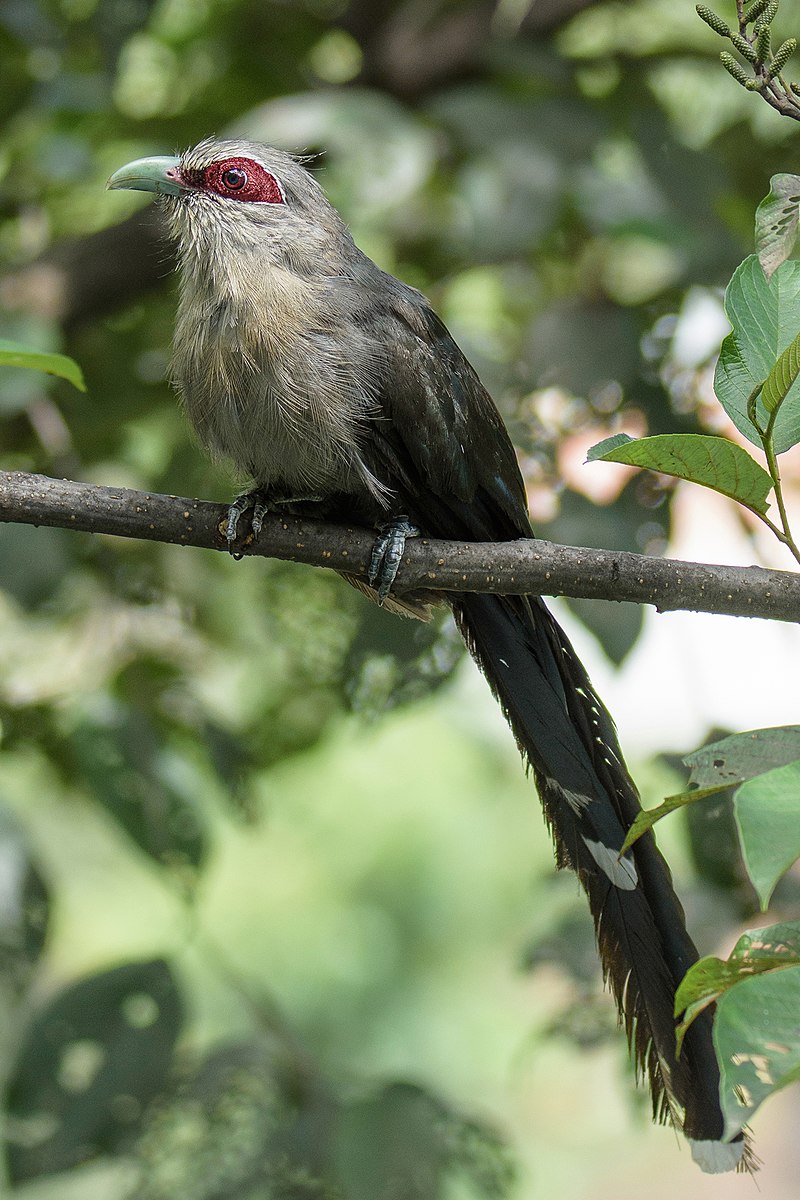
The green-billed malkoha, a species of non-parasitic cuckoo, thrives across the Indian Subcontinent and Southeast Asia. Its plumage is waxy bluish black, complemented by a long tail with white-tipped feathers.
Within dry scrub and thin forests, these birds showcase a unique curved and prominent bill.
Scientific classification:
| Kingdom | Animalia |
| Phylum | Chordata |
| Class | Aves |
| Order | Cuculiformes |
| Family | Cuculidae |
| Genus | Phaenicophaeus |
| Species | P. tristis |
Also Featured In: Common Birds of Ko Lanta, Birds That Live In Phuket Island
22. Kingfisher
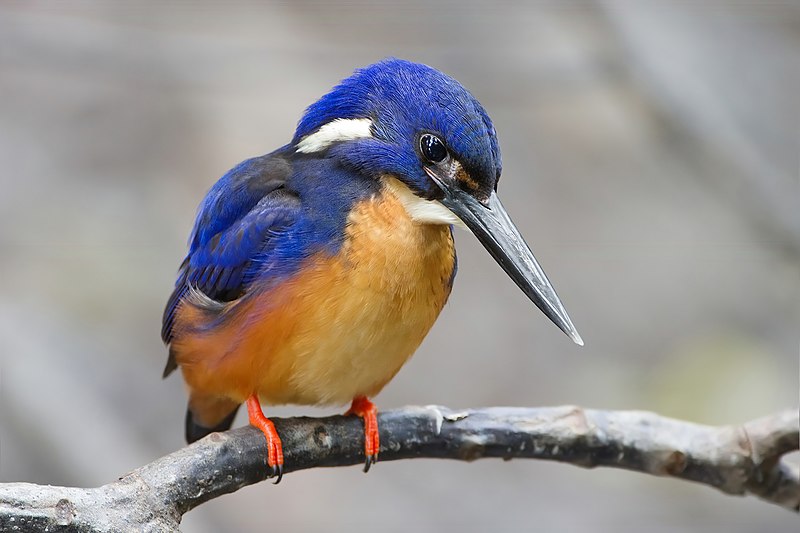
Kingfishers, from the Alcedinidae family, showcase plumage and remarkable diversity. Dwelling mainly in tropical areas of Africa, Asia, and Oceania, they also inhabit forests in Europe and the Americas.
Nearly 118 species belong to this group, divided into three subfamilies and 19 genera. These birds, with sharp bills and colorful feathers, predominantly inhabit deep forests near serene water bodies in tropical regions.
Scientific classification:
| Kingdom | Animalia |
| Phylum | Chordata |
| Class | Aves |
| Order | Coraciiformes |
| Suborder | Alcedines |
| Family | Alcedinidae Rafinesque, 1815 |
Also Featured In: Birds You’ll Find in Moldova, African Birds
23. Greater White-Fronted Goose
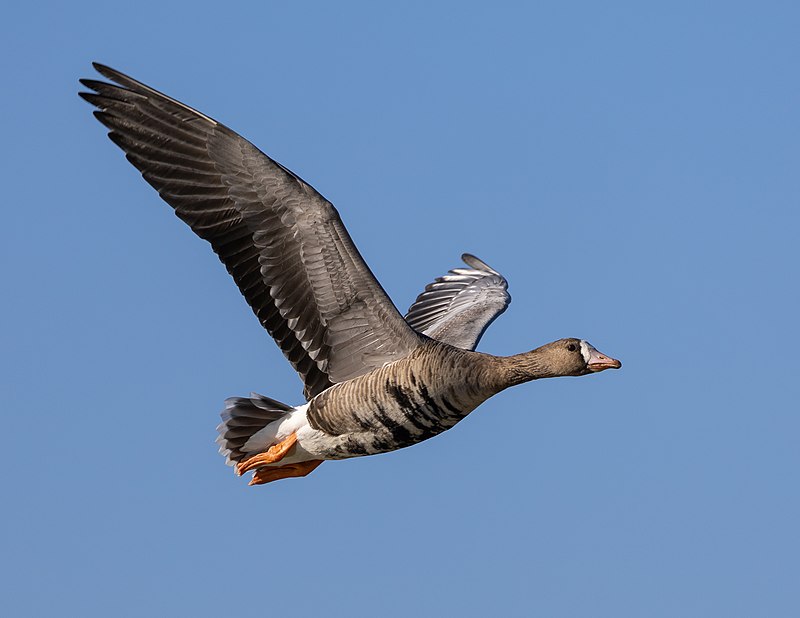
The Greater White-Fronted Goose breeds in northern Canada, Alaska, Greenland, and Russia. During winter, it migrates south to North America, Europe, and Asia.
Notable for its salt-and-pepper breast markings, it’s colloquially called “specklebelly” in North America.
The species, Anser albifrons, plays an essential role in global avian biodiversity. In India, it contributes to the country’s rich bird diversity, despite being less frequently observed.
Scientific classification:
| Kingdom | Animalia |
| Phylum | Chordata |
| Class | Aves |
| Order | Anseriformes |
| Family | Anatidae |
| Genus | Anser |
| Species | A. albifrons |
Also Featured In: Birds that Live in Greenland, Tundra Birds
24. White-Throated Kingfisher
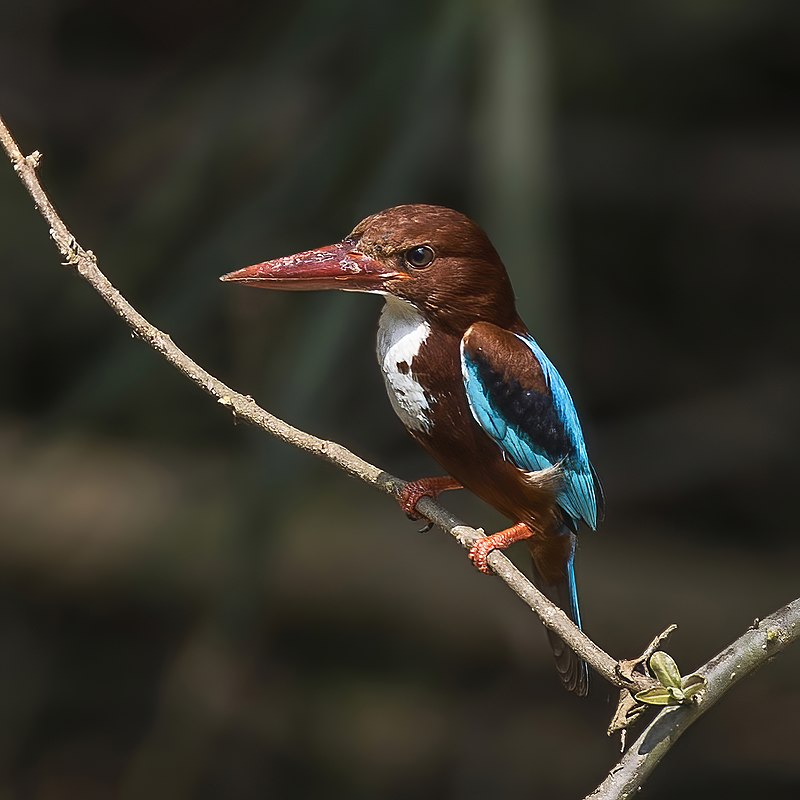
This bird species is known for its striking turquoise and chestnut plumage. The white-throated kingfisher, also referred to as the white-breasted kingfisher, thrives across Asia, spanning from the Sinai to Indonesia.
Within India, its presence is widespread, with some populations making occasional short-distance migrations.
These kingfishers frequently inhabit open habitats and are easily identifiable due to their distinctive colors and the bright red bills they possess.
Scientific classification:
| Kingdom | Animalia |
| Phylum | Chordata |
| Class | Aves |
| Order | Coraciiformes |
| Family | Alcedinidae |
| Subfamily | Halcyoninae |
| Genus | Halcyon |
| Species | H. smyrnensis |
Also Featured In: Lebanon Birds Live in Semi-Desert Areas, Birds of Islamabad
25. Red-Crested Pochard
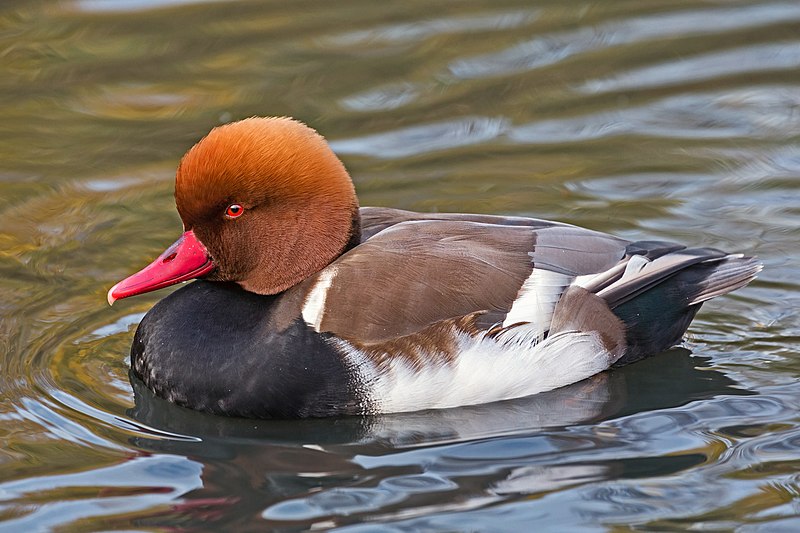
The red-crested pochard is a stunning diving duck native to India. Recognizable by its vivid golden-red head, this bird belongs to the Anatidae family.
As Netta rufina, it thrives near freshwater lakes and marshes. The male boasts bold colors during breeding, while the female has more subdued hues.
It’s commonly found alongside other waterfowl, contributing to India’s rich avian diversity. Conservation efforts focus on protecting its habitat due to its ecological significance.
Scientific classification:
| Kingdom | Animalia |
| Phylum | Chordata |
| Class | Aves |
| Order | Anseriformes |
| Family | Anatidae |
| Genus | Netta |
| Species | N. rufina |
Also Featured In: Most Common Birds of Ko Samui, Most Common Birds of Netherlands Island
26. Grey-Headed Swamphen
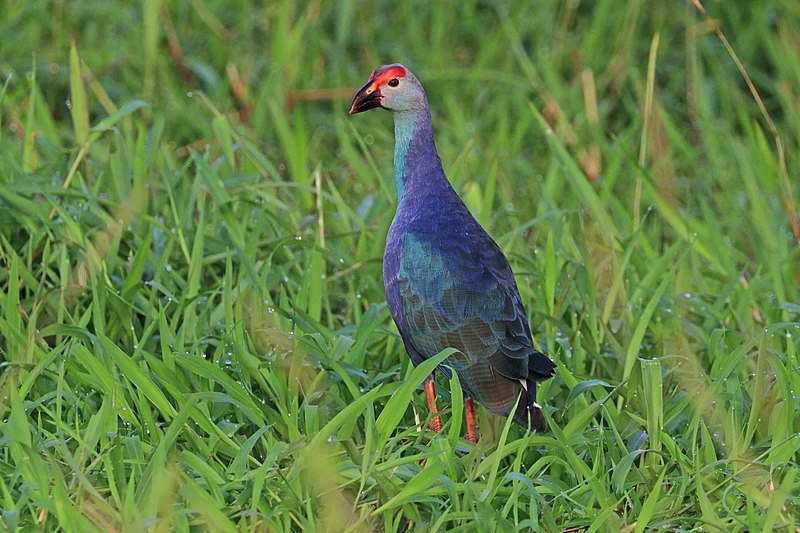
The Grey-Headed Swamphen is a waterbird from the Middle East to Northern Thailand. Its striking blue and purple hues make it noticeable in wetland habitats.
Typically found in India, it contributes to the region’s avian diversity. The swamphen adapts to various wetlands, feeding primarily on aquatic vegetation. It is a vital component of the ecosystem, supporting ecological balance.
Scientific classification:
| Kingdom | Animalia |
| Phylum | Chordata |
| Class | Aves |
| Order | Gruiformes |
| Family | Rallidae |
| Genus | Porphyrio |
| Species | P. poliocephalus |
Also Featured In: Magenta Birds You Didn’t Know,
27. Indian Skimmer
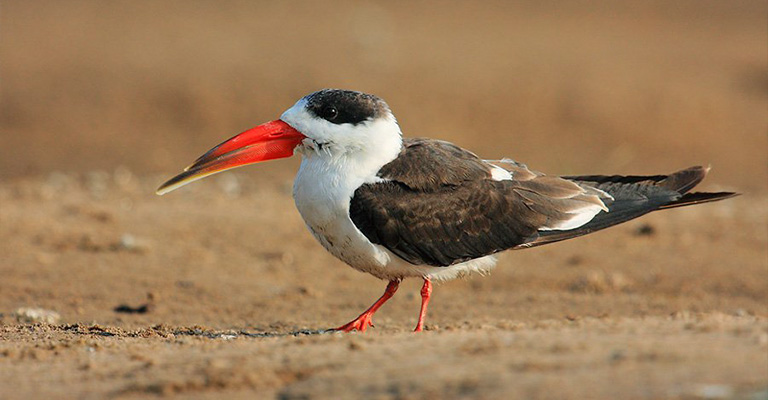
One of three species in the skimmer genus, the Indian Skimmer (Rynchops albicollis) belongs to the Laridae family. Distinct for its long lower mandible, it inhabits rivers and estuaries across the Indian subcontinent.
These birds, with striking black and white plumage, often grace freshwater lakes and large river systems, maintaining India’s rich avian diversity.
Conservation status remains near threatened, highlighting the importance of habitat preservation for this unique species.
Scientific classification:
| Kingdom | Animalia |
| Phylum | Chordata |
| Class | Aves |
| Order | Charadriiformes |
| Family | Laridae |
| Genus | Rynchops |
| Species | R. albicollis |
28. Blue-Faced Malkoha
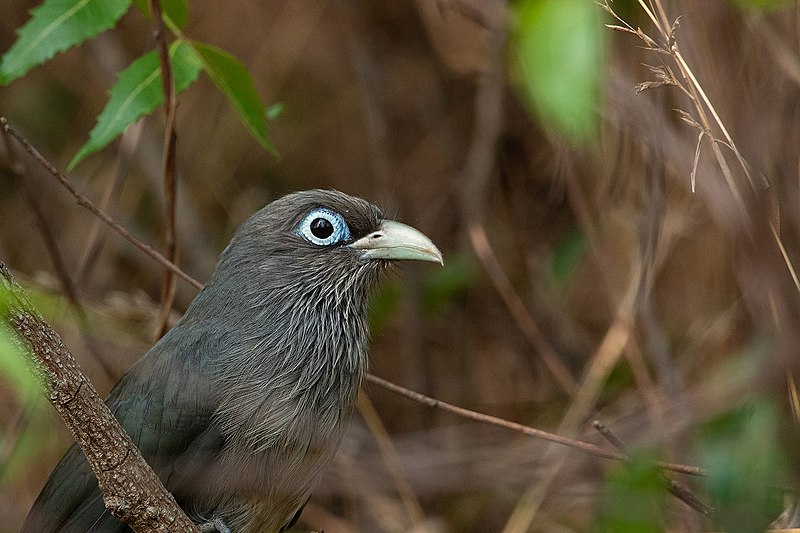
The blue-faced malkoha thrives in the scrub and deciduous forests of peninsular India and Sri Lanka. This bird displays a unique waxy, dark blue-grey plumage on its upperparts.
Its long tail features graduated white-tipped feathers, making it easily recognizable. As a non-parasitic cuckoo, it contributes uniquely to the ecosystem balance without relying on other bird species for reproduction.
Scientific classification:
| Kingdom | Animalia |
| Phylum | Chordata |
| Class | Aves |
| Order | Cuculiformes |
| Family | Cuculidae |
| Genus | Phaenicophaeus |
| Species | P. viridirostris |
29. Andaman Coucal
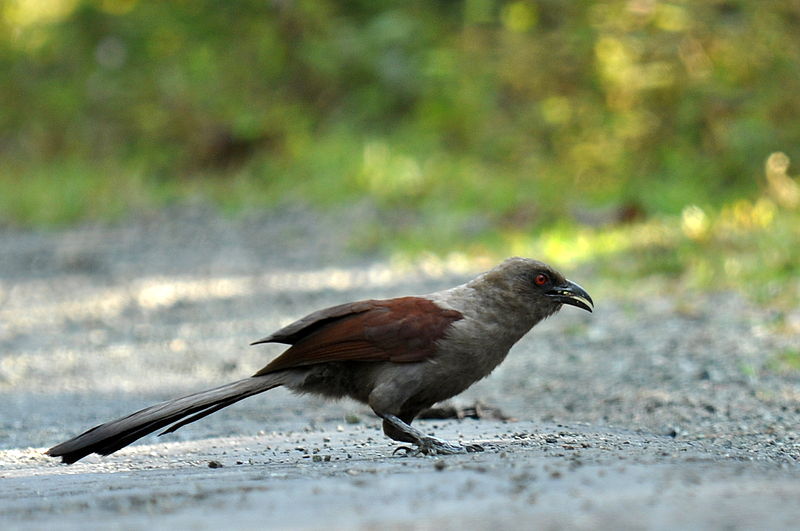
The Andaman Coucal, or brown coucal, is a unique species he encounters in the Andamans, Coco, and Table Islands.
It’s primarily seen in forested habitats and thickly covered gardens, where its non-parasitic nature becomes evident. Occasionally, it’s treated as a subspecies of the greater coucal, though it stands out with distinct characteristics.
Scientific classification:
| Kingdom | Animalia |
| Phylum | Chordata |
| Class | Aves |
| Order | Cuculiformes |
| Family | Cuculidae |
| Genus | Centropus |
| Species | C. andamanensis |
30. Asian Emerald Cuckoo
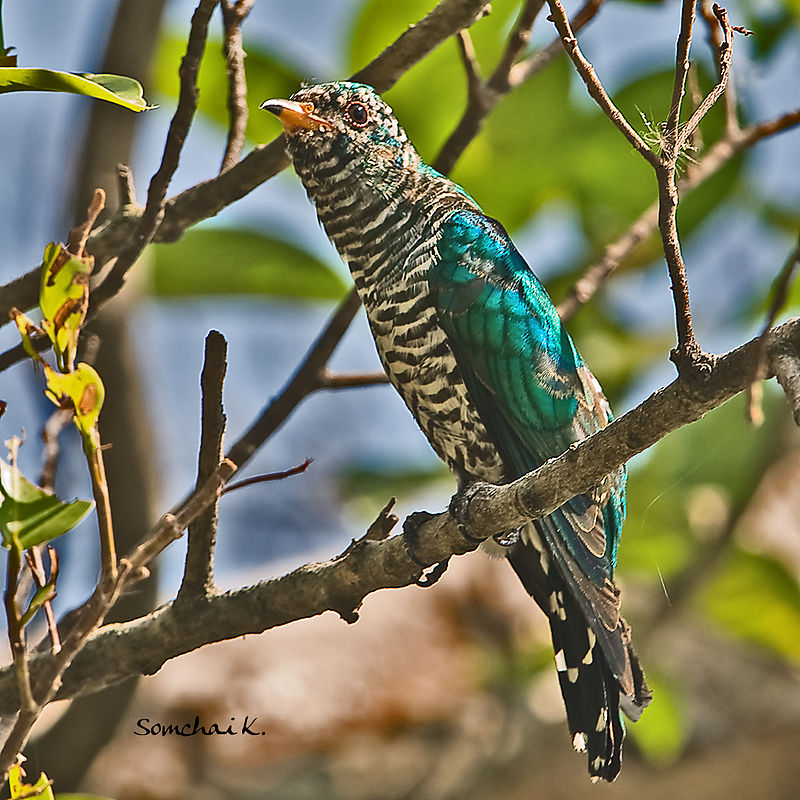
The Asian emerald cuckoo, known for its captivating metallic green and coppery plumage, belongs to the Cuculidae family.
This bird ranges across Bangladesh, Bhutan, Cambodia, China, India, Indonesia, Laos, Malaysia, Myanmar, Nepal, Sri Lanka, Thailand, and Vietnam.
Its feathers and distinct features make it a sought-after sight in birdwatching circles. The species enriches the diverse avian landscape across Asia, including regions throughout India.
Scientific classification:
| Kingdom | Animalia |
| Phylum | Chordata |
| Class | Aves |
| Order | Cuculiformes |
| Family | Cuculidae |
| Genus | Chrysococcyx |
| Species | C. maculatus |
Also Featured In: Common Birds of Hainan,
31. Violet Cuckoo
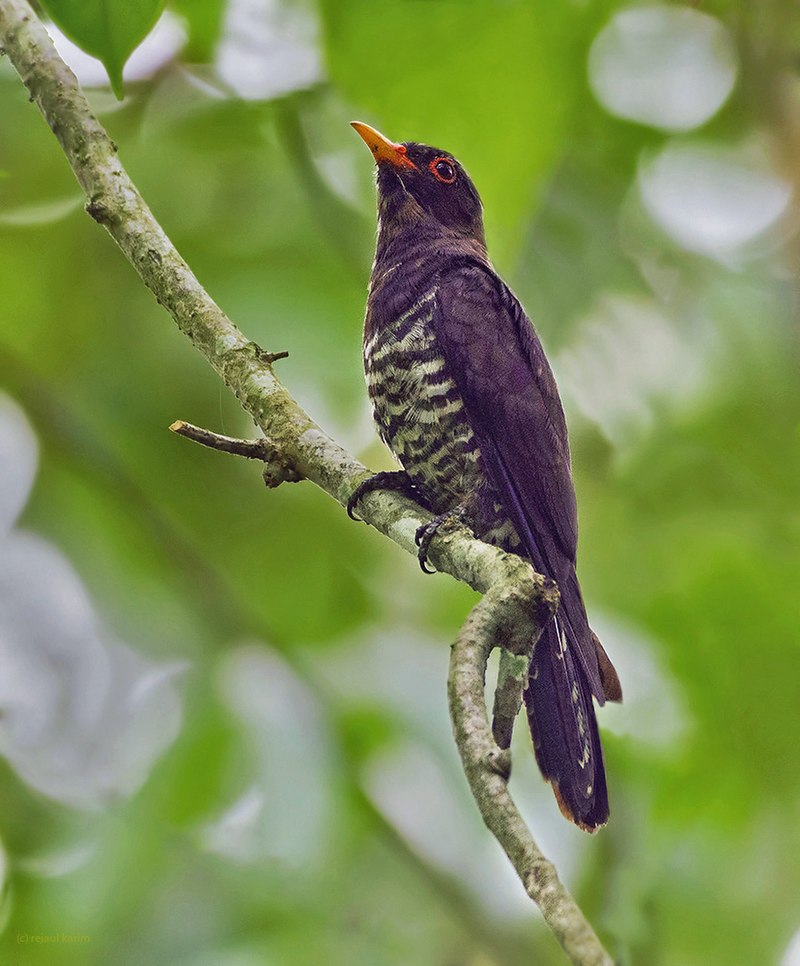
The violet cuckoo, Chrysococcyx xanthorhynchus, stands out with striking plumage. Males showcase glossy violet feathers and prominent iridescent chests.
Their tails are blackish, accented with white tips and barred outer feathers. In contrast, females exhibit mottled greenish-bronze upper parts and dark crowns.
Juveniles display barred rufous and greenish bronze feathers, evolving into mature colors. This bird enriches India’s avian tapestry with its unique appearance.
Scientific classification:
| Kingdom | Animalia |
| Phylum | Chordata |
| Class | Aves |
| Order | Cuculiformes |
| Family | Cuculidae |
| Genus | Chrysococcyx |
| Species | C. xanthorhynchus |
Also Featured In: Birds that Live in Kuala Lumpur,
32. Lesser Cuckoo
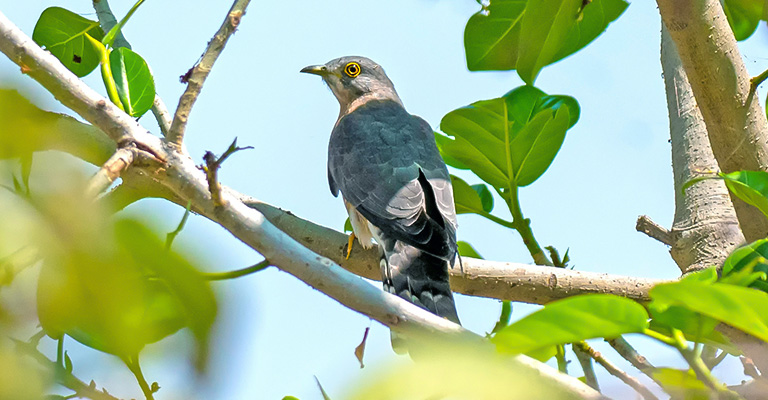
The Lesser Cuckoo, identified by its unique song, sings a distinct phrase resembling “eat-your-choKY-pepper!”. Adults usually appear gray with black-barred white underparts and dark eyes.
A subset of females display bright rufous above, accented by dark wing bars. Compared to other cuckoos, it is more compact and stumpy.
This bird prefers the canopy of lowland and foothill forests, singing and foraging effectively in these habitats.
Scientific classification:
| Kingdom | Animalia |
| Phylum | Chordata |
| Class | Aves |
| Order | Cuculiformes |
| Family | Cuculidae |
| Genus | Cuculus |
| Species | C. poliocephalus |
33. Thrush
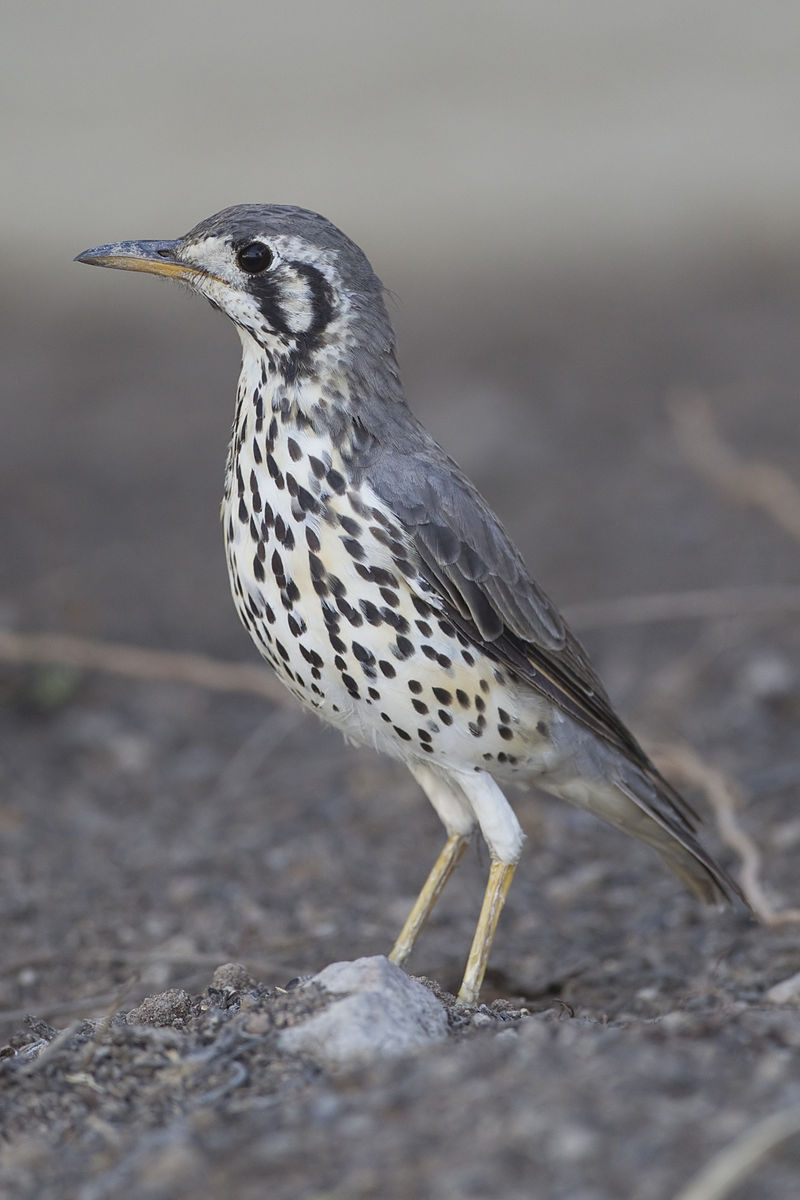
Thrush stands out for its striking appearance. In India, the Common Blackbird, a type of thrush, inhabits wooded areas, gardens, and parks.
Marked by its dark plumage, it contributes to the diverse avian ecosystem. Another notable example is the Malabar Whistling Thrush, celebrated for its melodic calls.
These birds highlight the richness of India’s birdlife, drawing attention to their ecological significance and appeal to birdwatchers.
Scientific classification:
| Kingdom | Animalia |
| Phylum | Chordata |
| Class | Aves |
| Order | Passeriformes |
| Suborder | Passeri |
| Family | Turdidae Rafinesque, 1815 |
Also Featured In: Most Common Songs Birds that Live around You, Native Birds of Kazakhstan
34. Slaty-Legged Crake
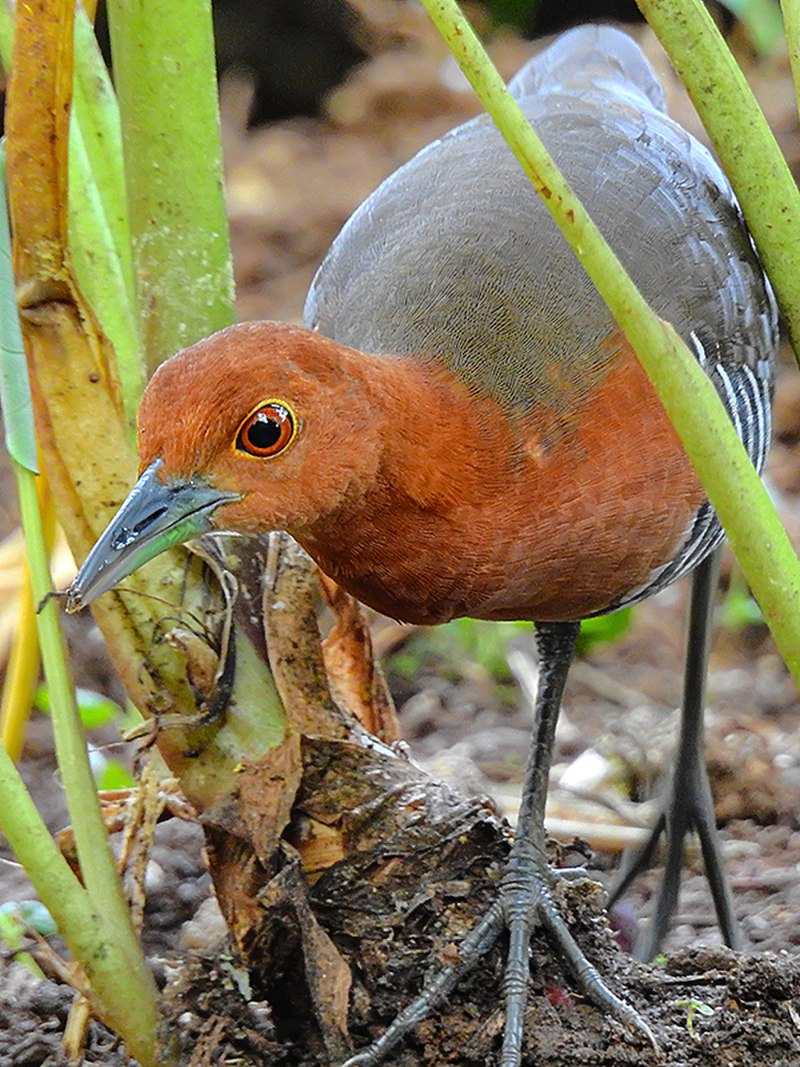
The slaty-legged crake, or banded crake, belongs to the Rallidae family. It inhabits swamps and wet regions in India and beyond.
This waterbird measures about 25 cm, with a laterally flattened body that aids in navigating dense undergrowth. Its distinctive coloring includes a brown back and a chestnut head and breast. Both sexes display similar plumage, while juveniles are darker.
Scientific classification:
| Kingdom | Animalia |
| Phylum | Chordata |
| Class | Aves |
| Order | Gruiformes |
| Family | Rallidae |
| Genus | Rallina |
| Species | R. eurizonoides |
Also Featured In: Coastal Birds That Live around Miyako-jima, Birds That Live In Siquijor
35. Black-Bellied Tern
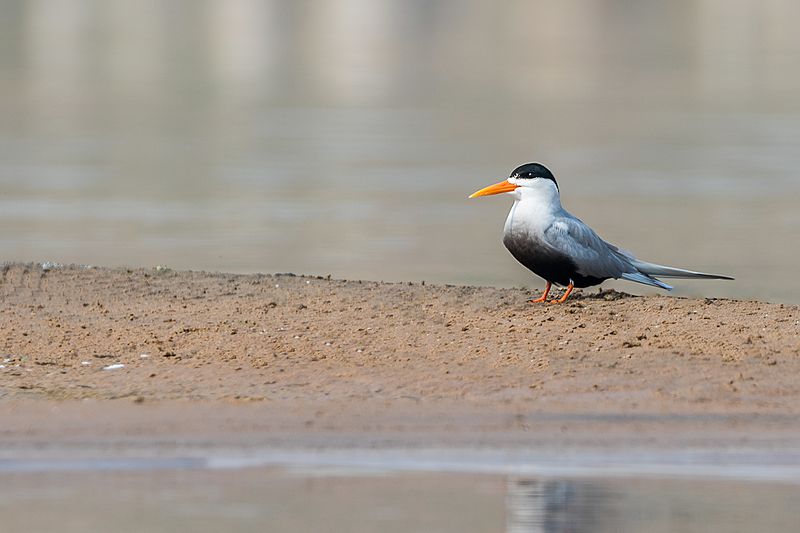
The Black-Bellied Tern, identified scientifically as Sterna acuticauda, inhabits large rivers within the Indian subcontinent. Its range spans from Pakistan and Nepal to India and Myanmar.
Due to its rarity, especially in the east, IUCN lists it as endangered. Conservation efforts are crucial for its survival, given the significant habitat constraints it faces in its natural ecosystem.
Scientific classification:
| Kingdom | Animalia |
| Phylum | Chordata |
| Class | Aves |
| Order | Charadriiformes |
| Family | Laridae |
| Genus | Sterna |
| Species | S. acuticauda |
36. Himalayan Cuckoo
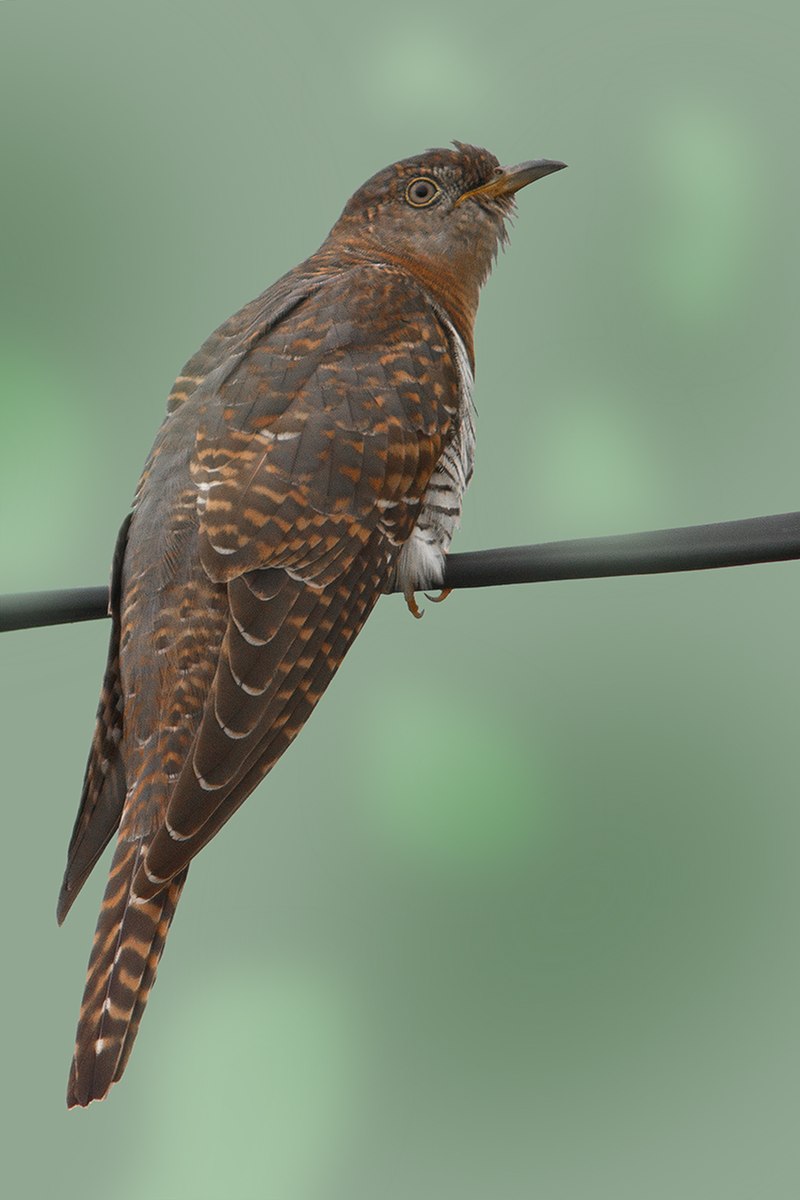
The Himalayan Cuckoo, scientifically known as Cuculus saturatus, thrives in the eastern Himalayas extending to southern China and Taiwan.
Breeding in these mountainous regions, it searches for milder climates during winter, migrating to Southeast Asia and the Greater Sunda Islands.
This bird is a brood parasite, relying on other species to raise its young, showcasing unique reproductive behavior within the Cuculidae family.
Scientific classification:
| Kingdom | Animalia |
| Phylum | Chordata |
| Class | Aves |
| Order | Cuculiformes |
| Family | Cuculidae |
| Genus | Cuculus |
| Species | C. saturatus |
37. Bulbul
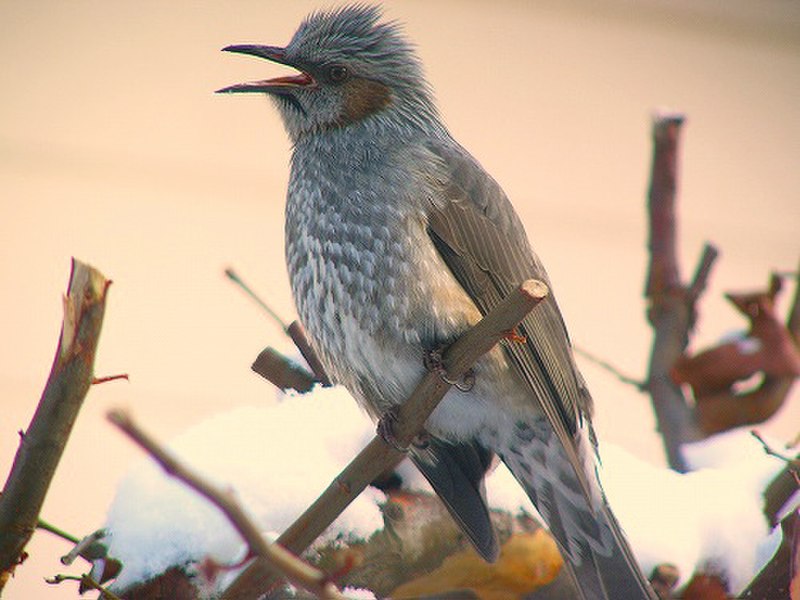
Bulbuls belong to the Pycnonotidae family, a group of medium-sized songbirds. The family includes greenbuls, brownbuls, leafloves, and bristlebills.
Their geographical range spans most of Africa and the Middle East, extending into tropical Asia. In India, these birds thrive in various habitats, contributing to the nation’s avian diversity.
Notable for their melodious songs, bulbuls attract birdwatchers globally. Their adaptability across habitats underscores their ecological importance.
Scientific classification:
| Kingdom | Animalia |
| Phylum | Chordata |
| Class | Aves |
| Order | Passeriformes |
| Parvorder | Sylviida |
| Family | Pycnonotidae Gray, GR, 1840 |
Also Featured In: Birds That Live in Iraq, Common Uzbekistan Birds
38. Red Junglefowl
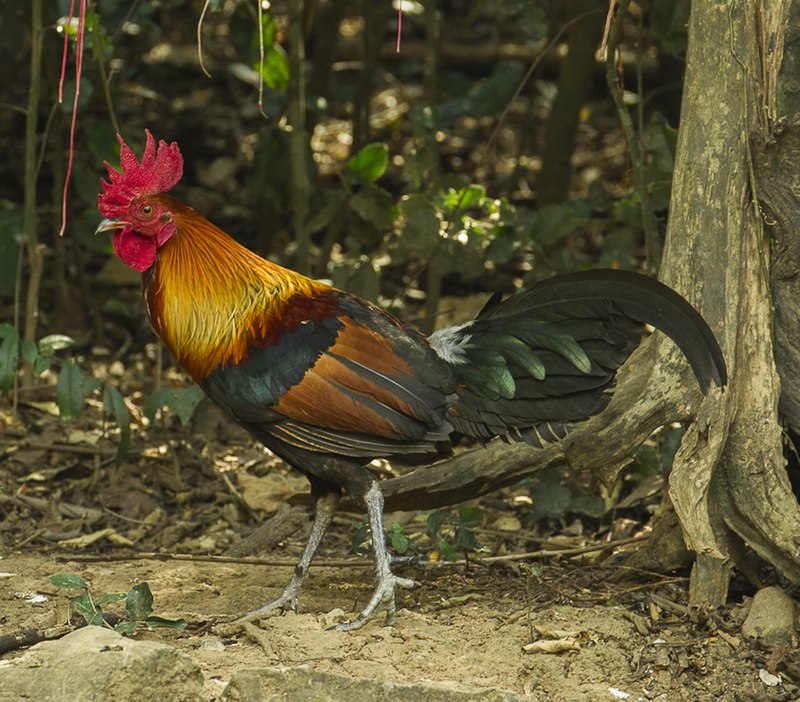
The Red Junglefowl (Gallus gallus) thrives in Southeast and parts of South Asia. This terrestrial bird belongs to the Phasianidae family. It’s the wild ancestor of domestic chickens.
Plumage distinguishes males, with females having subtler tones. In India’s diverse ecosystems, the Red Junglefowl plays a crucial role in biodiversity.
Known for ground foraging, they inhabit dense forests, contributing significantly to India’s rich avian diversity.
Scientific classification:
| Kingdom | Animalia |
| Phylum | Chordata |
| Class | Aves |
| Order | Galliformes |
| Family | Phasianidae |
| Genus | Gallus |
| Species | G. gallus |
Also Featured In: Birds of Kauai, Hawaii, Beautiful Birds Found in Coron Island
39. Black-Necked Crane
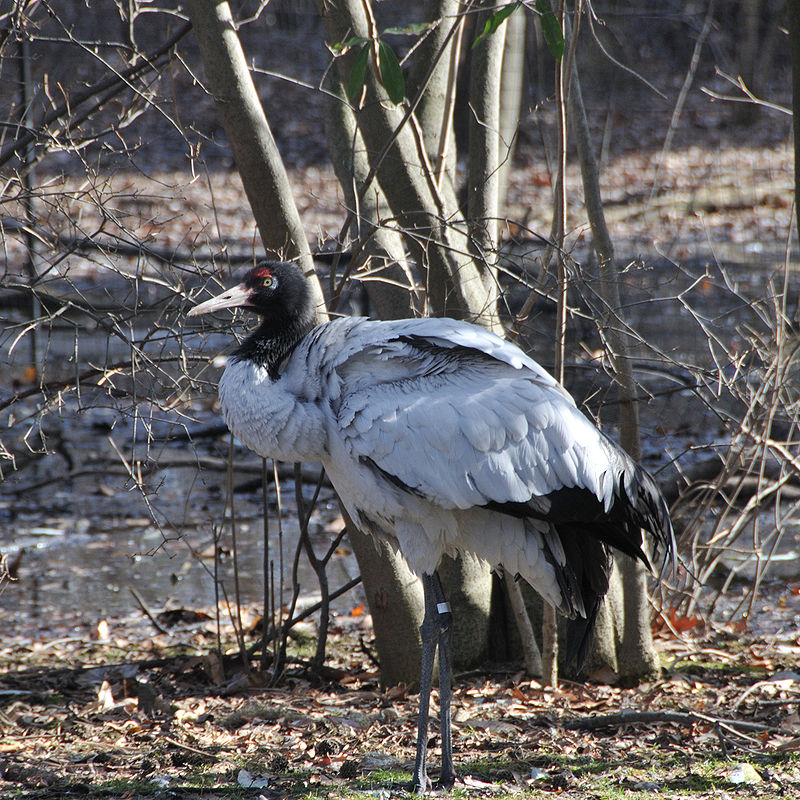
The Black-Necked Crane, part of the Gruidae family, inhabits the Tibetan Plateau, India, and Bhutan. It stands 139 cm tall with a wingspan of 235 cm and weighs 5.5 kg.
This crane displays a whitish-gray body with a black head and upper neck. Slightly threatened in India, its conservation status is vulnerable due to habitat loss.
Scientific classification:
| Kingdom | Animalia |
| Phylum | Chordata |
| Class | Aves |
| Order | Gruiformes |
| Family | Gruidae |
| Genus | Grus |
| Species | G. nigricollis |
Also Featured In: Asian Birds, Birds of Ladakh
40. Himalayan Quail
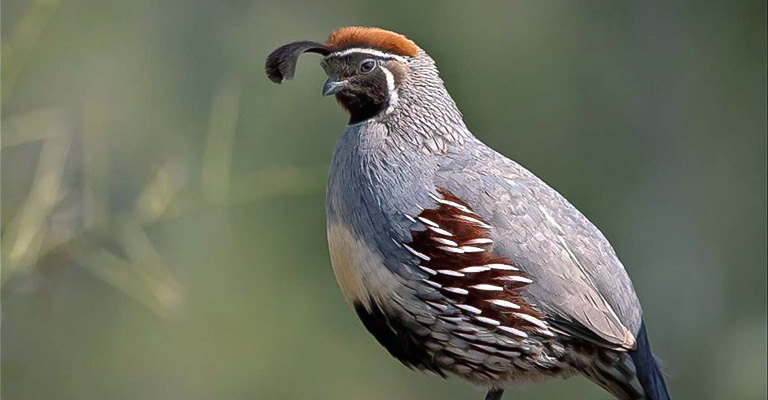
The Himalayan Quail, a medium-sized bird of the pheasant family, was last seen in 1876. Belonging to the critically endangered category, it is feared extinct.
Known from two locations in India’s western Himalayas, it’s endemic to this area. Due to habitat constraints, its preferred range is in Uttarakhand, northwest India.
Modern conservation efforts emphasize the urgency to protect remaining avian habitats in this region.
Scientific classification:
| Kingdom | Animalia |
| Phylum | Chordata |
| Class | Aves |
| Order | Galliformes |
| Family | Phasianidae |
| Tribe | Coturnicini |
| Genus | Ophrysia Bonaparte, 1856 |
| Species | O. superciliosa |
Also Featured In: Birds that Live in Uttarakhand,
41. Black Kite
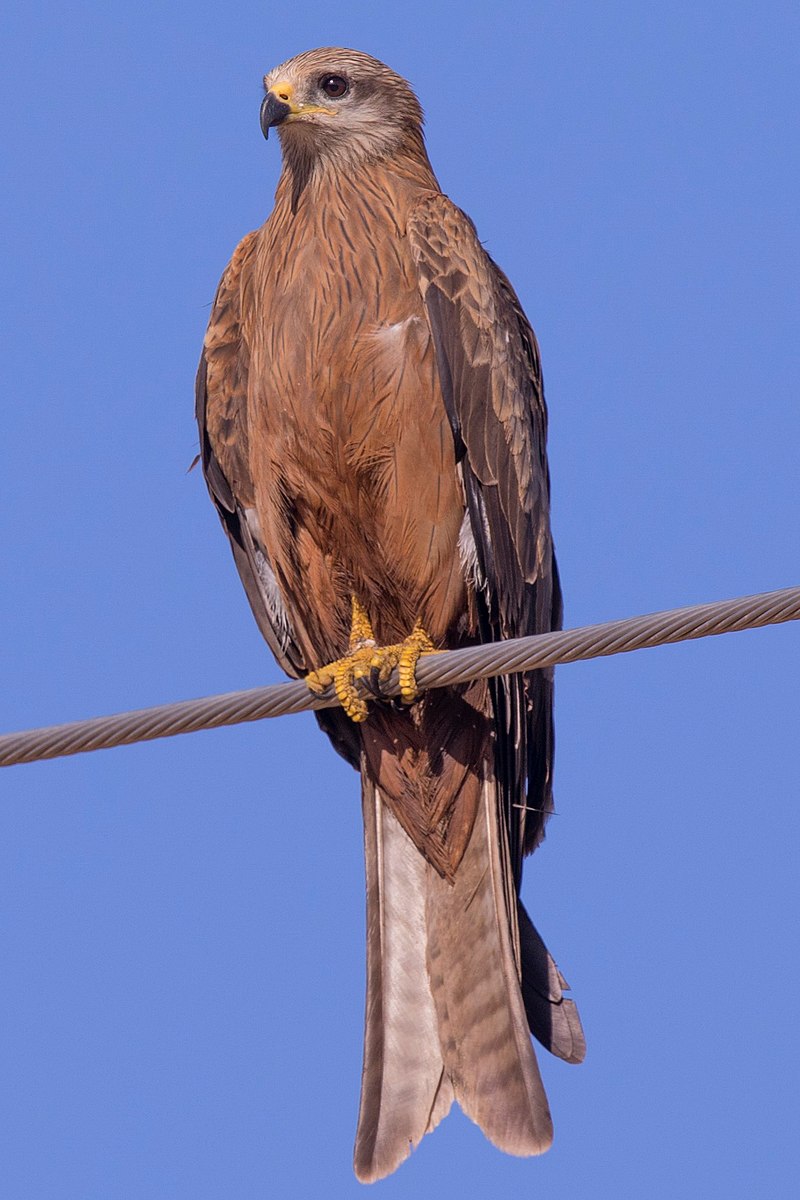
Black Kites possess dark plumage and exhibit a buoyant flight style. Across their range, they vary significantly but remain identifiable by their unique tail fork and short head and neck. Juveniles appear paler with more contrasting markings.
They frequently forage in urban areas, rubbish dumps, and grasslands while usually avoiding heavily forested regions. Sometimes spotted alone, these birds also gather in large flocks during migration and at optimal feeding locations.
Scientific classification:
| Kingdom | Animalia |
| Phylum | Chordata |
| Class | Aves |
| Order | Accipitriformes |
| Family | Accipitridae |
| Genus | Milvus |
| Species | M. migrans |
Also Featured In: Summer Birds that Live around Us, Moscow Birds You Need to See
42. Spoon-Billed Sandpiper
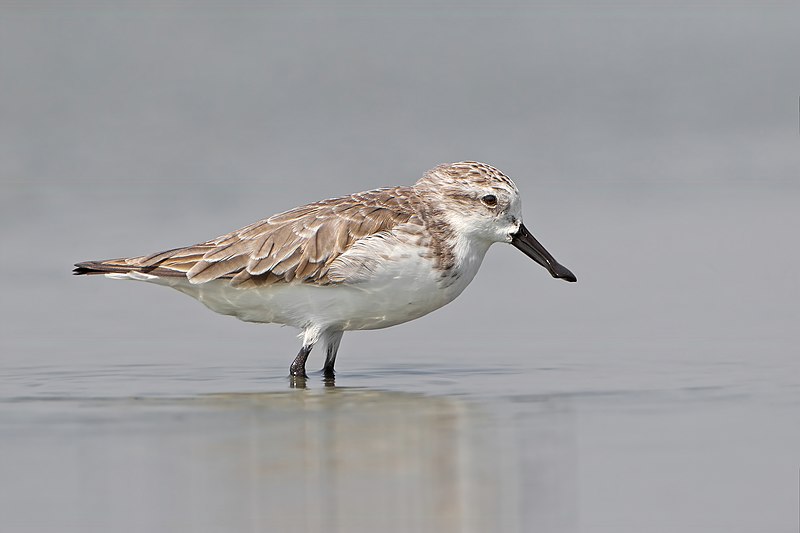
The Spoon-Billed Sandpiper is found in India’s wetlands. This bird species, identified as critically endangered, has witnessed drastic declines since the 1970s.
In 2000, experts estimated its breeding population to be 350–500 individuals. It’s known for its unique spoon-shaped bill, aiding in foraging while migrating across Southeast Asia’s shores. Conservation efforts are crucial to its survival.
Scientific classification:
| Kingdom | Animalia |
| Phylum | Chordata |
| Class | Aves |
| Order | Charadriiformes |
| Family | Scolopacidae |
| Genus | Calidris |
| Species | C. pygmaea |
43. Falcated Duck
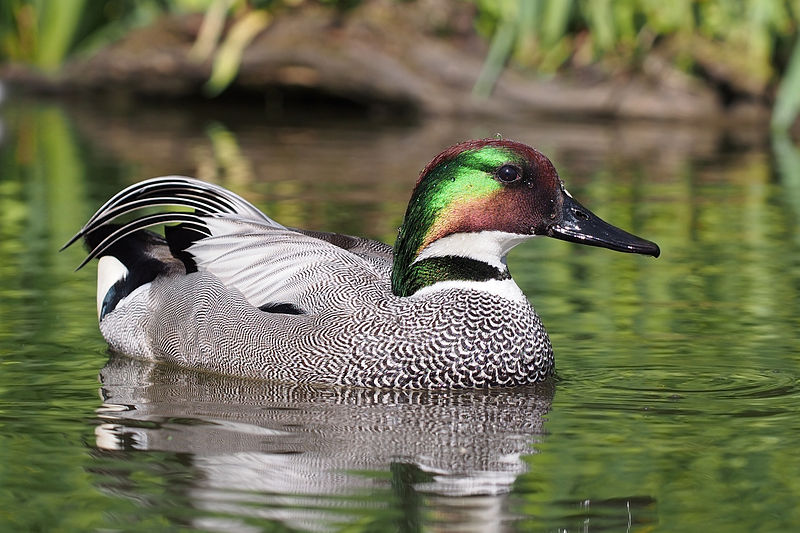
The Falcated Duck (Mareca falcata) inhabits the east Palearctic, including East Siberia and Mongolia. Males and females measure 46–53 cm long, weighing between 422–770 g.
They exhibit wingspans from 79–91 cm. Breeding males showcase a distinctive appearance with vermiculated grey plumage, long sickle-shaped tertials, and a dark green head.
The IUCN categorizes this species as near threatened due to habitat challenges.
Scientific classification:
| Kingdom | Animalia |
| Phylum | Chordata |
| Class | Aves |
| Order | Anseriformes |
| Family | Anatidae |
| Genus | Mareca |
| Species | M. falcata |
Also Featured In: Tokyo Birds You Need to Know, Birds Commonly Found in Kyoto
44. Spotted Dove
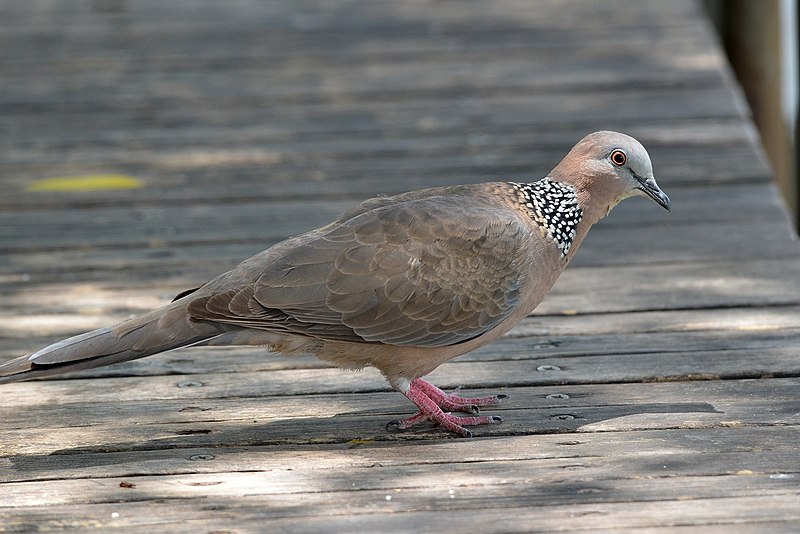
The Spotted Dove, known scientifically as Spilopelia chinensis, is widespread across the Indian subcontinent and Southeast Asia. It showcases a slender build and a long tail, making it easily recognizable.
Notably, these birds have a distinctive spotted pattern on their neck. Introduced in various global regions, Spotted Doves have established feral populations.
These doves adapt well to diverse environments from urban areas to rural landscapes, contributing significantly to avian diversity.
Scientific classification:
| Kingdom | Animalia |
| Phylum | Chordata |
| Class | Aves |
| Order | Columbiformes |
| Family | Columbidae |
| Genus | Spilopelia |
| Species | S. chinensis |
Also Featured In: Hawaii Big Island Birds You Should Know, Birds that Commonly Found in Bali
45. Sunbird
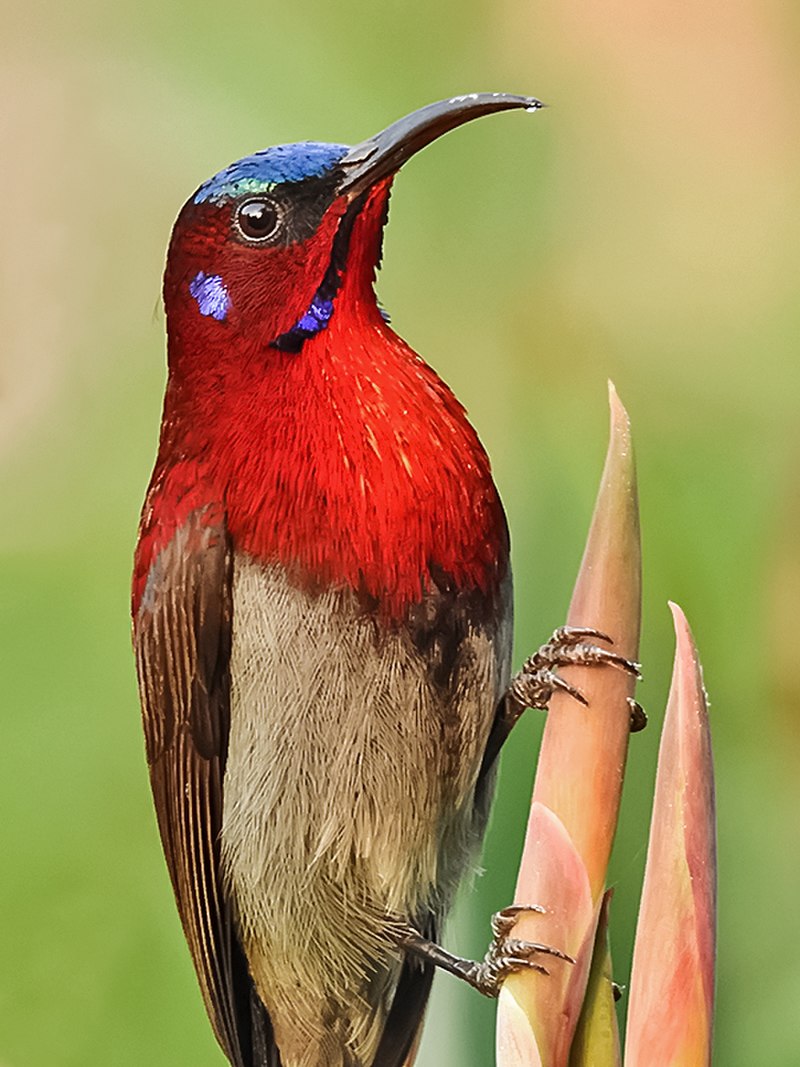
Sunbirds belong to the family Nectariniidae, thriving in India’s varied habitats. These small passerines, recognized for their slender bodies and plumage, often feature iridescent feathers.
Males display a wider range of colors compared to females. Adapted for nectar feeding, sunbirds exhibit downward-curved bills.
Their ecological role as pollinators benefits the region’s biodiversity. Sunbirds are especially abundant in India’s southern and eastern regions, where floral diversity supports their dietary needs.
Scientific classification:
| Kingdom | Animalia |
| Phylum | Chordata |
| Class | Aves |
| Order | Passeriformes |
| Superfamily | Passeroidea |
| Family | Nectariniidae Vigors, 1825 |
Also Featured In: Large African Birds You Need to Know, Birds Live In Koh Kood
46. Yellow-Footed Green Pigeon
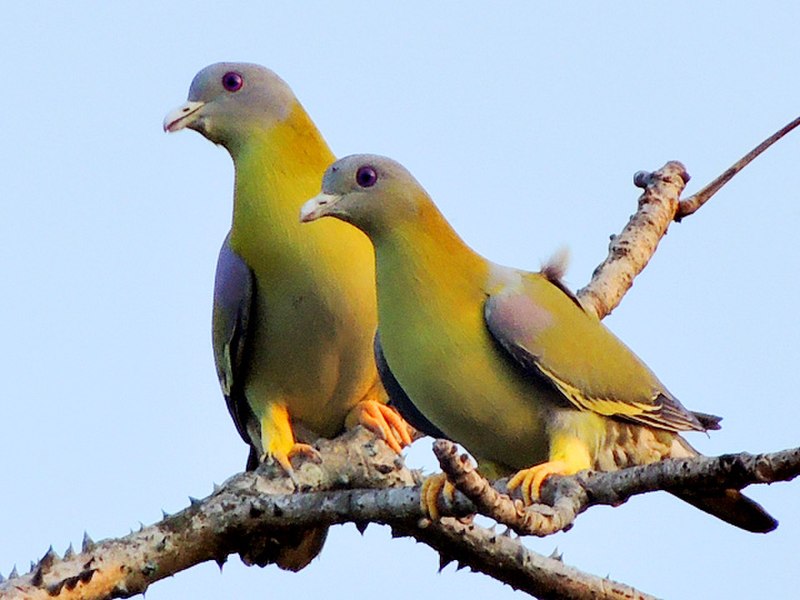
The Yellow-Footed Green Pigeon, known scientifically as Treron phoenicopterus, thrives in the Indian subcontinent and parts of Southeast Asia.
As Maharashtra’s state bird, it’s fondly called Hariyal in Marathi. In Assam, locals refer to it as Haitha in the north and Haitol in the south. This common green pigeon enriches India’s avian diversity.
Scientific classification:
| Kingdom | Animalia |
| Phylum | Chordata |
| Class | Aves |
| Order | Columbiformes |
| Family | Columbidae |
| Genus | Treron |
| Species | T. phoenicopterus |
47. Glareolidae
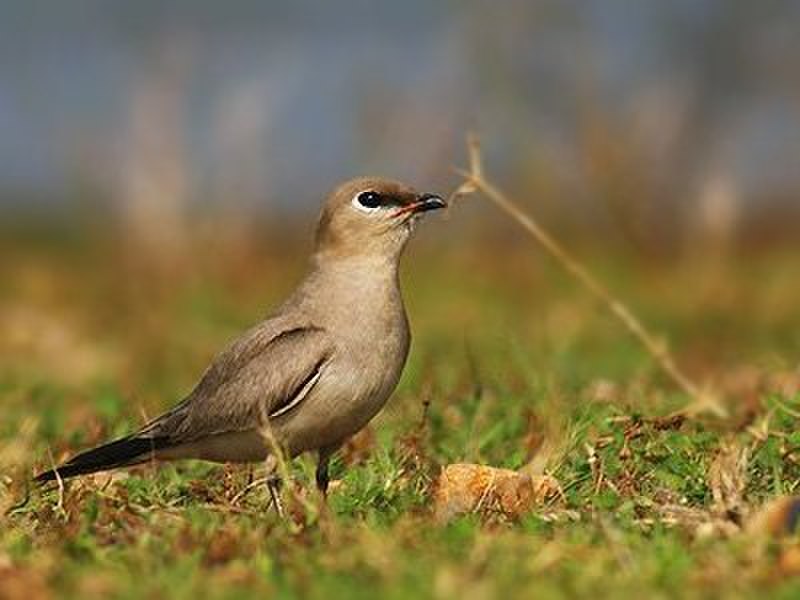
Glareolidae, a bird family within the wader suborder Lari, includes both pratincoles and coursers. This family comprises 17 species spread across 4 genera.
Scientific classification:
| Kingdom | Animalia |
| Phylum | Chordata |
| Class | Aves |
| Order | Charadriiformes |
| Suborder | Lari |
| Family | Glareolidae CL Brehm, 1831 |
48. Lesser Whistling Duck
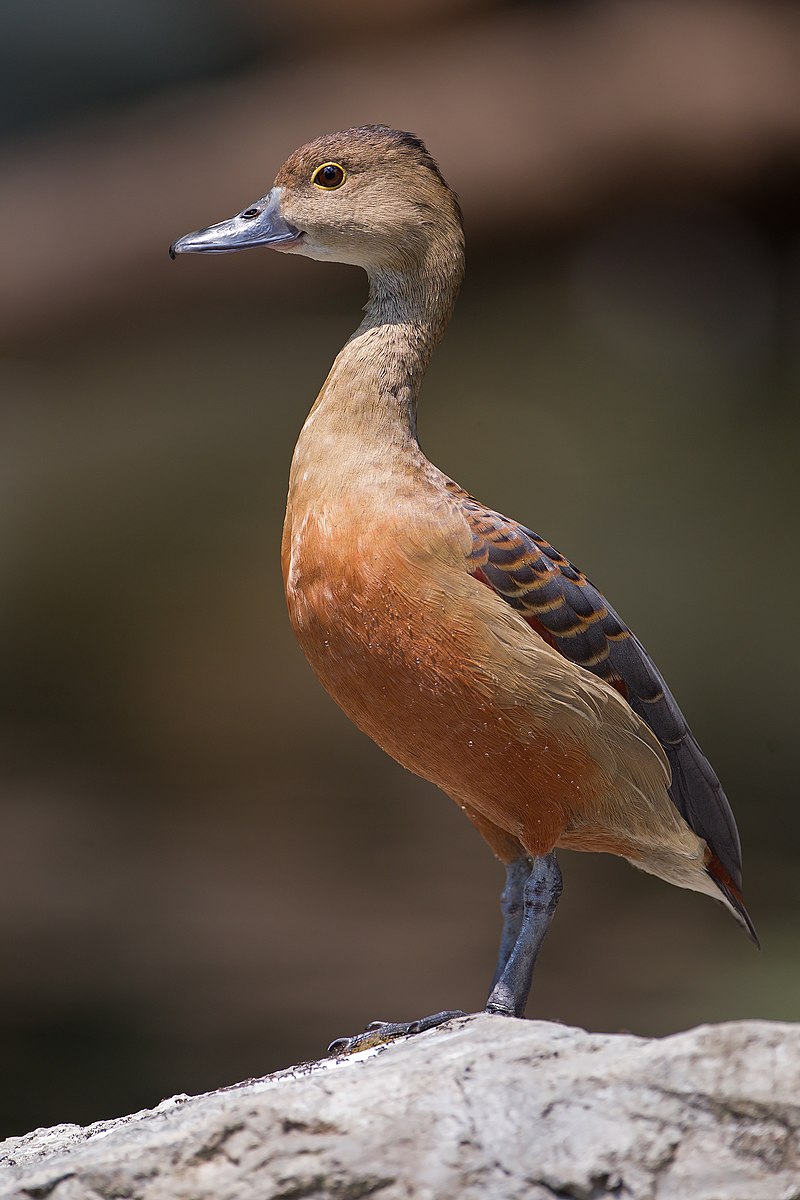
The Lesser Whistling Duck, Dendrocygna javanica, thrives in the Indian subcontinent and Southeast Asia.
It’s known for forming flocks around lakes and wet paddy fields during daylight. At night, these ducks actively feed, showcasing their nocturnal nature. Observers often refer to them as Indian Whistling Ducks or Lesser Whistling Teals.
Scientific classification:
| Kingdom | Animalia |
| Phylum | Chordata |
| Class | Aves |
| Order | Anseriformes |
| Family | Anatidae |
| Genus | Dendrocygna |
| Species | D. javanica |
49. Knob-Billed Duck
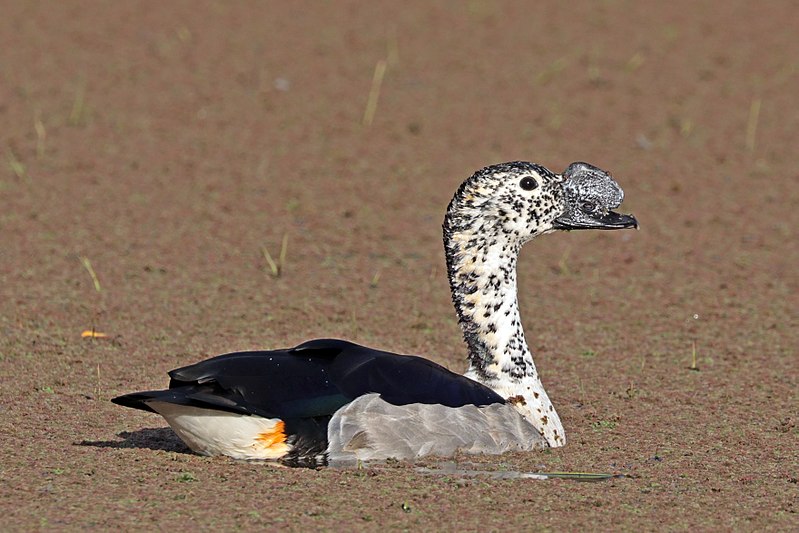
The Knob-Billed Duck, also called the African Comb Duck, inhabits wetlands and waterways across Sub-Saharan Africa, Madagascar, South Asia, and Indochina.
While commonly classified as Sarkidiornis melanotos, taxonomic authorities sometimes differentiate it from the Comb Duck.
This waterfowl thrives in tropical and subtropical environments, contributing to regional avian diversity with its distinctive knob-like feature on the bill.
Scientific classification:
| Kingdom | Animalia |
| Phylum | Chordata |
| Class | Aves |
| Order | Anseriformes |
| Family | Anatidae |
| Genus | Sarkidiornis |
| Species | S. melanotos |
50. Himalayan Monal
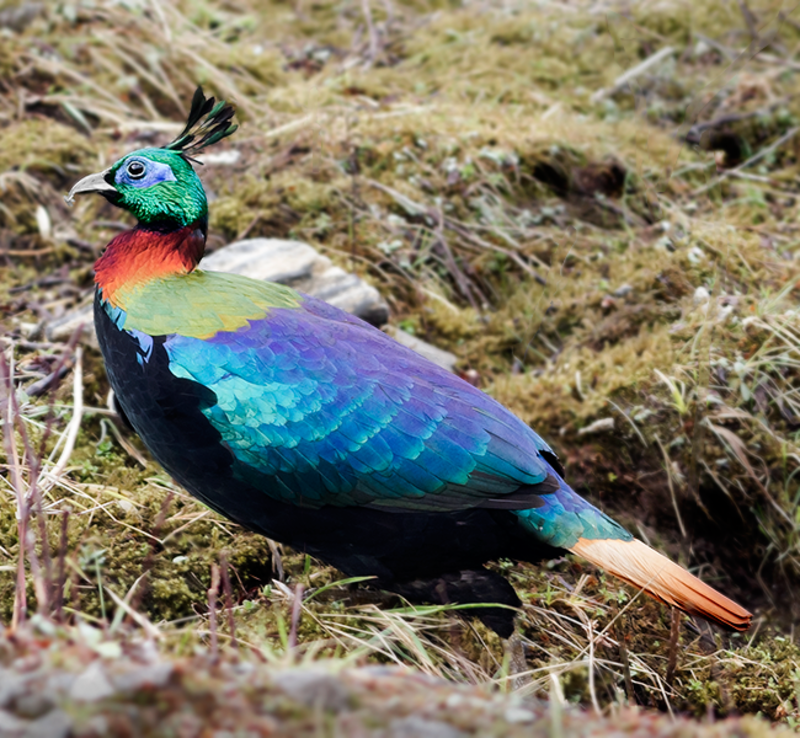
The Himalayan Monal (Lophophorus impejanus) inhabits the high-altitude forests of the Himalayas. This pheasant thrives between 2,100 and 4,500 meters in elevation.
Noted for its plumage, it belongs to the Phasianidae family. Its conservation status is of Least Concern, according to the IUCN Red List.
Scientific classification:
| Kingdom | Animalia |
| Phylum | Chordata |
| Class | Aves |
| Order | Galliformes |
| Family | Phasianidae |
| Genus | Lophophorus |
| Species | L. impejanus |
51. Satyr Tragopan
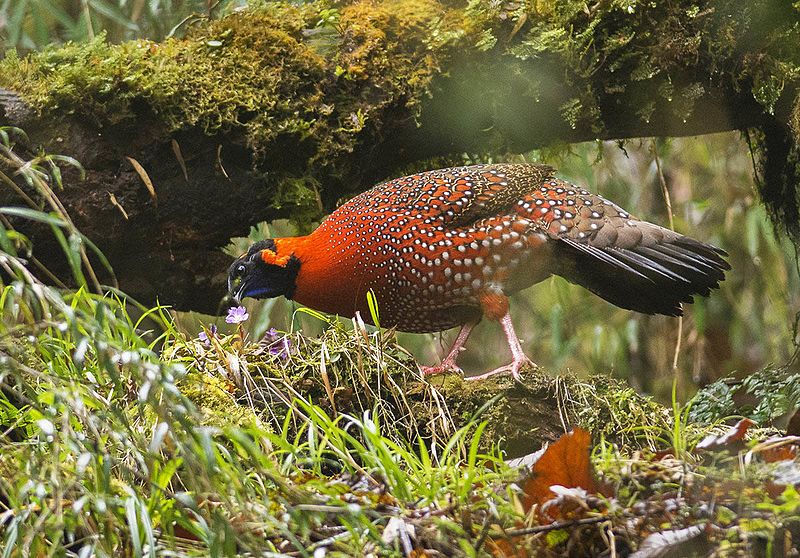
The Satyr Tragopan, or crimson horned pheasant, thrives in the Himalayas. This bird resides in moist oak and rhododendron forests, often amid dense undergrowth and bamboo.
Found in India, Tibet, Nepal, and Bhutan, it seasonally ranges between 1,800 meters in winter and up to 4,200 meters in summer.
Scientific classification:
| Kingdom | Animalia |
| Phylum | Chordata |
| Class | Aves |
| Order | Galliformes |
| Family | Phasianidae |
| Genus | Tragopan |
| Species | T. satyra |
Conclusion
India’s avian diversity is a testament to its rich ecological tapestry, offering a array of species that captivate birdwatchers and ecologists alike.
From the iconic Indian peafowl to the critically endangered Spoon-Billed Sandpiper, each bird plays a unique role in its ecosystem.
The growing interest in birdwatching highlights the need for responsible conservation efforts to ensure these species thrive for future generations.
By safeguarding their habitats and understanding their ecological significance, India can continue to celebrate and preserve its remarkable avian heritage.
As awareness and conservation initiatives grow, the future of India’s birds looks hopeful yet demands ongoing commitment.